Рейтинг книг Jp. A. Calosse
Начиная изучать творчество писателя - уделите внимание произведениям, которые находятся на вершине этого рейтинга. Смело нажимайте на стрелочки - вверх и вниз, если считаете, что какое-то произведение должно находиться выше или ниже в списке. В результате общих усилий, в том числе, на основании ваших оценок мы и получим самый адекватный рейтинг книг Jp. A. Calosse.
-
1.
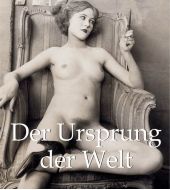 Der Psychoanalytiker Jacques Lacan war nicht nur letzter Besitzer von Courbets Der Ursprung der Welt, sondern war sich auch dessen anzüglichem Inhalt bewusst. Und so tat der Liebhaber erotischer Kunst es seinen Vorbesitzern gleich und verhüllte beziehungsweise versteckte das Bild hinter einem „weniger obszönen“ Kunstwerk. Die Genealogie des weiblichen Geschlechts ist lang und jedes Zeitalter hatte seine ganz eigene, die Fantasie anregende Bezeichnung: Die Chinesen nannten es „Tal der Rosen“ (Vorsicht mit den Dornen!), die „Perser Honigtopf“ (Nimm dich in Acht vor den Bienen!) und die Griechen „Venushügel“ (Beachte den steilen Aufstieg!). Und so hinterlassen uns Dichter, Maler und sogar einige bekannte Psychologen immer wieder ihre Zeugnisse. Ganz unverhüllt zeigt sich Der Ursprung der Welt in vielen Abbildungen und Details in diesem für Liebhaber gemachten Buch. ... Далее
Der Psychoanalytiker Jacques Lacan war nicht nur letzter Besitzer von Courbets Der Ursprung der Welt, sondern war sich auch dessen anzüglichem Inhalt bewusst. Und so tat der Liebhaber erotischer Kunst es seinen Vorbesitzern gleich und verhüllte beziehungsweise versteckte das Bild hinter einem „weniger obszönen“ Kunstwerk. Die Genealogie des weiblichen Geschlechts ist lang und jedes Zeitalter hatte seine ganz eigene, die Fantasie anregende Bezeichnung: Die Chinesen nannten es „Tal der Rosen“ (Vorsicht mit den Dornen!), die „Perser Honigtopf“ (Nimm dich in Acht vor den Bienen!) und die Griechen „Venushügel“ (Beachte den steilen Aufstieg!). Und so hinterlassen uns Dichter, Maler und sogar einige bekannte Psychologen immer wieder ihre Zeugnisse. Ganz unverhüllt zeigt sich Der Ursprung der Welt in vielen Abbildungen und Details in diesem für Liebhaber gemachten Buch. ... Далее -
2.
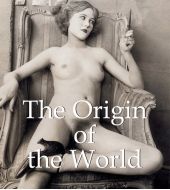 Lacan, the last owner of Courbet’s The Origin of the World, loved the painting so much that he couldn’t even bring himself to look at it. Instead, he hid it behind a “safer” painting. The Chinese called it the “valley of the roses” (watch out for the thorns!), the Persians, the “honey-pot” (watch out for the bees!), and the Greeks, “the mound of Venus” (mind the steep climb!); to each era its fantasies and its theories about the feminine mystique. Then there are the testimonies of poets, painters, and even of some famous psychiatrists. The Origin of the World is a work of art only suitable for lovers of intrigue. ... Далее
Lacan, the last owner of Courbet’s The Origin of the World, loved the painting so much that he couldn’t even bring himself to look at it. Instead, he hid it behind a “safer” painting. The Chinese called it the “valley of the roses” (watch out for the thorns!), the Persians, the “honey-pot” (watch out for the bees!), and the Greeks, “the mound of Venus” (mind the steep climb!); to each era its fantasies and its theories about the feminine mystique. Then there are the testimonies of poets, painters, and even of some famous psychiatrists. The Origin of the World is a work of art only suitable for lovers of intrigue. ... Далее -
3.
 Whistler taucht zu einem entscheidenden Zeitpunkt der Kunstgeschichte auf und übernimmt die Rolle eines Vorläufers. Den Impressionisten gleich hat er den Willen, seine Ideen durchzusetzen. In einer ersten Schaffensphase wird der Künstler vom Realismus Courbets und vom Japonismus beeinflusst. Whistler findet mit den Nocturnes und der Cremorne Gardens-Serie zu künstlerischer Eigenständigkeit, und stellt sich dem Akademismus entgegen. Das Portrait seiner Mutter nennt er Arrangement in Grau und Schwarz, was für seine ästhetischen Theorien sehr bezeichnend ist. Wenn er die Lustgärten von Cremorne darstellt, so nicht, um identifizierbare Personen darauf abzubilden, sondern um eine Stimmung zu erfassen. Die Ufernebel der Themse, bleiche Lichter, Fabrikschlote haben es ihm angetan. Während dieses Zeitabschnitts schockiert er seine Zeitgenossen mit seinen abstrakt anmutenden Bildern. Die Portraits (Ganzfiguren) beherrschen seine nächste Phase, in der er Berühmtheit erlangt. Die portraitierten Personen werden in ihrer natürlichen Umgebung dargestellt, was ihnen eine merkwürdige Präsenz verleiht. Oscar Wilde (1854 bis 1900) lässt sich von den Portraits zur Niederschrift des Bildnis des Dorian Gray inspirieren. Seine Launen, seine Eleganz und seine Persönlichkeit geben Anlass zu Neugierde und Bewunderung. Enger Freund von Mallarmé (1842 bis 1898), bewundert von Marcel Proust (1871 bis 1922), provozierender Dandy, empfindlicher Weltmann, anspruchsvoller Künstler: Whistler war ein wagemutiger Erneuerer. ... Далее
Whistler taucht zu einem entscheidenden Zeitpunkt der Kunstgeschichte auf und übernimmt die Rolle eines Vorläufers. Den Impressionisten gleich hat er den Willen, seine Ideen durchzusetzen. In einer ersten Schaffensphase wird der Künstler vom Realismus Courbets und vom Japonismus beeinflusst. Whistler findet mit den Nocturnes und der Cremorne Gardens-Serie zu künstlerischer Eigenständigkeit, und stellt sich dem Akademismus entgegen. Das Portrait seiner Mutter nennt er Arrangement in Grau und Schwarz, was für seine ästhetischen Theorien sehr bezeichnend ist. Wenn er die Lustgärten von Cremorne darstellt, so nicht, um identifizierbare Personen darauf abzubilden, sondern um eine Stimmung zu erfassen. Die Ufernebel der Themse, bleiche Lichter, Fabrikschlote haben es ihm angetan. Während dieses Zeitabschnitts schockiert er seine Zeitgenossen mit seinen abstrakt anmutenden Bildern. Die Portraits (Ganzfiguren) beherrschen seine nächste Phase, in der er Berühmtheit erlangt. Die portraitierten Personen werden in ihrer natürlichen Umgebung dargestellt, was ihnen eine merkwürdige Präsenz verleiht. Oscar Wilde (1854 bis 1900) lässt sich von den Portraits zur Niederschrift des Bildnis des Dorian Gray inspirieren. Seine Launen, seine Eleganz und seine Persönlichkeit geben Anlass zu Neugierde und Bewunderung. Enger Freund von Mallarmé (1842 bis 1898), bewundert von Marcel Proust (1871 bis 1922), provozierender Dandy, empfindlicher Weltmann, anspruchsvoller Künstler: Whistler war ein wagemutiger Erneuerer. ... Далее -
4.
 Der Psychoanalytiker Jacques Lacan war nicht nur letzter Besitzer von Courbets Der Ursprung der Welt, sondern war sich auch dessen anzüglichem Inhalt bewusst. Und so tat der Liebhaber erotischer Kunst es seinen Vorbesitzern gleich und verhüllte beziehungsweise versteckte das Bild hinter einem „weniger obszönen“ Kunstwerk. Die Genealogie des weiblichen Geschlechts ist lang und jedes Zeitalter hatte seine ganz eigene, die Fantasie anregende Bezeichnung: Die Chinesen nannten es „Tal der Rosen“ (Vorsicht mit den Dornen!), die Perser „Honigtopf“ (Nimm dich in Acht vor den Bienen!) und die Griechen „Venushügel“ (Beachte den steilen Aufstieg!). Und so hinterlassen uns Dichter, Maler und sogar einige bekannte Psychologen immer wieder ihre Zeugnisse. Ganz unverhüllt zeigt sich Der Ursprung der Welt in vielen Abbildungen und Details in diesem für Liebhaber gemachten Buch. ... Далее
Der Psychoanalytiker Jacques Lacan war nicht nur letzter Besitzer von Courbets Der Ursprung der Welt, sondern war sich auch dessen anzüglichem Inhalt bewusst. Und so tat der Liebhaber erotischer Kunst es seinen Vorbesitzern gleich und verhüllte beziehungsweise versteckte das Bild hinter einem „weniger obszönen“ Kunstwerk. Die Genealogie des weiblichen Geschlechts ist lang und jedes Zeitalter hatte seine ganz eigene, die Fantasie anregende Bezeichnung: Die Chinesen nannten es „Tal der Rosen“ (Vorsicht mit den Dornen!), die Perser „Honigtopf“ (Nimm dich in Acht vor den Bienen!) und die Griechen „Venushügel“ (Beachte den steilen Aufstieg!). Und so hinterlassen uns Dichter, Maler und sogar einige bekannte Psychologen immer wieder ihre Zeugnisse. Ganz unverhüllt zeigt sich Der Ursprung der Welt in vielen Abbildungen und Details in diesem für Liebhaber gemachten Buch. ... Далее -
5.
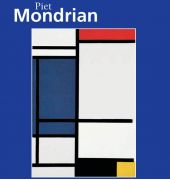 Der insgesamt der Kunstrichtung der Klassischen Moderne zuzurechnende Piet Mondrian (1872-1944) wurde im niederländischen Amersfort geboren. Nach seinem Studium in Amsterdam begann ers eine Künstlerkarriere im impressionistischen Stil als Figuren– und Landschaftsmaler. Seine Arbeiten aus jenen Jahren zeigen den Einfluss Vincent van Goghs (1853-1890) und des Fauvismus, einer französischen Stilrichtung aus dem Anfang des 20. Jahrhunderts. Auf seiner Reise des Jahres 1911 nach Paris entdeckte er Pablo Picassos (1881-1973) Arbeiten, damit für sich den Kubismus und wurde aufgrund dessen nach seiner Rückkehr zum Pionier der abstrakten Malereiin den Niederlanden. Seine Gemälde weisen ab den 1920er Jahren – er lebte zu dieser Zeit und für etwa zwanzig Jahre wieder in Paris – einen auf das Senkrechte und Waagerechte zurückgehenden Aufbau und damit strenge geometrische Formen auf, die, zusammen mit den Gegensätzen blauer, gelber, roter und nichtfarbiger Flächen, zu seinem Markenzeichen wurden. In New York, wo er seine letzten Jahre verbrachte, fand seine Kunst großen Anklang. Mondrian war nicht nur Maler, sondern auch Kunsttheoretiker und Mitbegründer der Kunstrichtung De Stijl. ... Далее
Der insgesamt der Kunstrichtung der Klassischen Moderne zuzurechnende Piet Mondrian (1872-1944) wurde im niederländischen Amersfort geboren. Nach seinem Studium in Amsterdam begann ers eine Künstlerkarriere im impressionistischen Stil als Figuren– und Landschaftsmaler. Seine Arbeiten aus jenen Jahren zeigen den Einfluss Vincent van Goghs (1853-1890) und des Fauvismus, einer französischen Stilrichtung aus dem Anfang des 20. Jahrhunderts. Auf seiner Reise des Jahres 1911 nach Paris entdeckte er Pablo Picassos (1881-1973) Arbeiten, damit für sich den Kubismus und wurde aufgrund dessen nach seiner Rückkehr zum Pionier der abstrakten Malereiin den Niederlanden. Seine Gemälde weisen ab den 1920er Jahren – er lebte zu dieser Zeit und für etwa zwanzig Jahre wieder in Paris – einen auf das Senkrechte und Waagerechte zurückgehenden Aufbau und damit strenge geometrische Formen auf, die, zusammen mit den Gegensätzen blauer, gelber, roter und nichtfarbiger Flächen, zu seinem Markenzeichen wurden. In New York, wo er seine letzten Jahre verbrachte, fand seine Kunst großen Anklang. Mondrian war nicht nur Maler, sondern auch Kunsttheoretiker und Mitbegründer der Kunstrichtung De Stijl. ... Далее -
6.
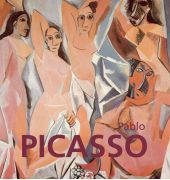 Von Pablo Picasso erzählt man, er hätte zu zeichnen angefangen, noch bevor er sprechen konnte. Geboren wurde er in Málaga, und hier verbrachte er auch die ersten zehn Jahre seines Lebens. Von seinem Vater lernte Pablo die Grundlagen der akademischen Malkunst. Er besuchte eine Kunstschule in Barcelona und schrieb sich 1897 an der Kunstakademie in Madrid ein. Noch keine 18 Jahre alt, erreichte Picasso den Höhepunkt seiner künstlerischen Rebellion und verwarf nicht nur die anämische Ästhetik der akademischen Kunst, sondern auch den prosaischen Realismus und schloss sich den Modernisten, also den nonkonformistischen Künstlern und Schriftstellern an, die Sabartés als die “Elite des katalanischen Denkens” bezeichnete. Picasso beschränkte sich 1899 und 1900 zunächst auf Motive, die für ihn die “endgültige Wahrheit” bedeuteten: die Vergänglichkeit des Lebens und die Unvermeidbarkeit des Todes. Seine frühen Werke, die “blaue Epoche” (1901-1904) waren auf blauen Ton gestimmt und von einer Reise durch Spanien sowie den Tod seines Freundes Casagemas beeinflusst. Er übersiedelte 1904 nach Paris, wo sich 1905 bis 1907 eine neue Phase abzeichnet, die période rose, erkennbar an einem fröhlicheren Stil mit reicherer Farbskala, vor allem Orange und Rosa. Während eines Sommeraufenthalts 1906 in Gosol (Spanien) nahm der weibliche Akt eine überragende Bedeutung für ihn ein. Er reduzierte die Formen radikal auf geometrische Strukturen und zeigte den weiblichen Körper auf unpersönliche Art: die “Frau” als Konzept. Exemplarisch für diesen Stilwandel ist das “skandalöse” im Winter und Frühling 1907 geschaffene Werk Les Demoiselles d’Avignon. Während sich Picassos ästhetischer Wandel 1907 auf die afrikanische Kunst zurückführen lässt, wird danach der Einfluss Cézannes entscheidend. Dies bezieht sich in erster Linie auf die einem konstruktiven System unterworfene räumliche Gestaltung der Leinwand als einer komponierten Einheit. Nach der Bombardierung von Guernica im Jahr 1937 schuf Picasso sein gleichnamiges Gemälde als Symbol gegen den Terror des Krieges. Sein Spätwerk zeigt eine Vielfalt von Stilen, seine Werke sind bunter, ausdrucksstärker und optimistischer. In einer Folge von Radierungen nimmt er die zentralen Themen seines Werks noch einmal auf: Akte, Zirkus, Stierkampf. Neben Bildern schafft er Unmengen von figürlichen Keramiken und auch plastische Werke. Er stirbt 1973 in seiner Villa in Mougins. ... Далее
Von Pablo Picasso erzählt man, er hätte zu zeichnen angefangen, noch bevor er sprechen konnte. Geboren wurde er in Málaga, und hier verbrachte er auch die ersten zehn Jahre seines Lebens. Von seinem Vater lernte Pablo die Grundlagen der akademischen Malkunst. Er besuchte eine Kunstschule in Barcelona und schrieb sich 1897 an der Kunstakademie in Madrid ein. Noch keine 18 Jahre alt, erreichte Picasso den Höhepunkt seiner künstlerischen Rebellion und verwarf nicht nur die anämische Ästhetik der akademischen Kunst, sondern auch den prosaischen Realismus und schloss sich den Modernisten, also den nonkonformistischen Künstlern und Schriftstellern an, die Sabartés als die “Elite des katalanischen Denkens” bezeichnete. Picasso beschränkte sich 1899 und 1900 zunächst auf Motive, die für ihn die “endgültige Wahrheit” bedeuteten: die Vergänglichkeit des Lebens und die Unvermeidbarkeit des Todes. Seine frühen Werke, die “blaue Epoche” (1901-1904) waren auf blauen Ton gestimmt und von einer Reise durch Spanien sowie den Tod seines Freundes Casagemas beeinflusst. Er übersiedelte 1904 nach Paris, wo sich 1905 bis 1907 eine neue Phase abzeichnet, die période rose, erkennbar an einem fröhlicheren Stil mit reicherer Farbskala, vor allem Orange und Rosa. Während eines Sommeraufenthalts 1906 in Gosol (Spanien) nahm der weibliche Akt eine überragende Bedeutung für ihn ein. Er reduzierte die Formen radikal auf geometrische Strukturen und zeigte den weiblichen Körper auf unpersönliche Art: die “Frau” als Konzept. Exemplarisch für diesen Stilwandel ist das “skandalöse” im Winter und Frühling 1907 geschaffene Werk Les Demoiselles d’Avignon. Während sich Picassos ästhetischer Wandel 1907 auf die afrikanische Kunst zurückführen lässt, wird danach der Einfluss Cézannes entscheidend. Dies bezieht sich in erster Linie auf die einem konstruktiven System unterworfene räumliche Gestaltung der Leinwand als einer komponierten Einheit. Nach der Bombardierung von Guernica im Jahr 1937 schuf Picasso sein gleichnamiges Gemälde als Symbol gegen den Terror des Krieges. Sein Spätwerk zeigt eine Vielfalt von Stilen, seine Werke sind bunter, ausdrucksstärker und optimistischer. In einer Folge von Radierungen nimmt er die zentralen Themen seines Werks noch einmal auf: Akte, Zirkus, Stierkampf. Neben Bildern schafft er Unmengen von figürlichen Keramiken und auch plastische Werke. Er stirbt 1973 in seiner Villa in Mougins. ... Далее -
7.
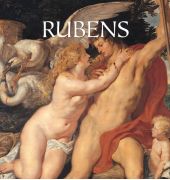 Für seine wohlgeformten, lasziven nackten Frauen berühmt, war Peter Paul Rubens erstes Anliegen die Darstellung der Sinnenfreuden in all ihren Formen. Ein Barockmaler, der in seinem gesamten künstlerischen Schaffen die Freuden und Wunder des Körperlichen feierte, die strikten sozialen Vorschriften zugunsten einer emotionalen und sinnlichen Porträtierung der Nacktheit aufgebend, um die Schönheit des menschlichen Körpers zu zelebrieren, die für den Künstler ebenso natürlich war wie die Landschaften seiner Jugend. ... Далее
Für seine wohlgeformten, lasziven nackten Frauen berühmt, war Peter Paul Rubens erstes Anliegen die Darstellung der Sinnenfreuden in all ihren Formen. Ein Barockmaler, der in seinem gesamten künstlerischen Schaffen die Freuden und Wunder des Körperlichen feierte, die strikten sozialen Vorschriften zugunsten einer emotionalen und sinnlichen Porträtierung der Nacktheit aufgebend, um die Schönheit des menschlichen Körpers zu zelebrieren, die für den Künstler ebenso natürlich war wie die Landschaften seiner Jugend. ... Далее -
8.
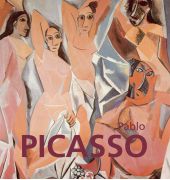 Von Pablo Picasso erzählt man, er hätte zu zeichnen angefangen, noch bevor er sprechen konnte. Geboren wurde er in Málaga, und hier verbrachte er auch die ersten zehn Jahre seines Lebens. Von seinem Vater lernte Pablo die Grundlagen der akademischen Malkunst. Er besuchte eine Kunstschule in Barcelona und schrieb sich 1897 an der Kunstakademie in Madrid ein. Noch keine 18 Jahre alt, erreichte Picasso den Höhepunkt seiner künstlerischen Rebellion und verwarf nicht nur die anämische Ästhetik der akademischen Kunst, sondern auch den prosaischen Realismus und schloss sich den Modernisten, also den nonkonformistischen Künstlern und Schriftstellern an, die Sabartés als die “Elite des katalanischen Denkens” bezeichnete. Picasso beschränkte sich 1899 und 1900 zunächst auf Motive, die für ihn die “endgültige Wahrheit” bedeuteten: die Vergänglichkeit des Lebens und die Unvermeidbarkeit des Todes. Seine frühen Werke, die “blaue Epoche” (1901-1904) waren auf blauen Ton gestimmt und von einer Reise durch Spanien sowie den Tod seines Freundes Casagemas beeinflusst. Er übersiedelte 1904 nach Paris, wo sich 1905 bis 1907 eine neue Phase abzeichnet, die période rose, erkennbar an einem fröhlicheren Stil mit reicherer Farbskala, vor allem Orange und Rosa. Während eines Sommeraufenthalts 1906 in Gosol (Spanien) nahm der weibliche Akt eine überragende Bedeutung für ihn ein. Er reduzierte die Formen radikal auf geometrische Strukturen und zeigte den weiblichen Körper auf unpersönliche Art: die “Frau” als Konzept. Exemplarisch für diesen Stilwandel ist das “skandalöse” im Winter und Frühling 1907 geschaffene Werk Les Demoiselles d’Avignon. Während sich Picassos ästhetischer Wandel 1907 auf die afrikanische Kunst zurückführen lässt, wird danach der Einfluss Cézannes entscheidend. Dies bezieht sich in erster Linie auf die einem konstruktiven System unterworfene räumliche Gestaltung der Leinwand als einer komponierten Einheit. Nach der Bombardierung von Guernica im Jahr 1937 schuf Picasso sein gleichnamiges Gemälde als Symbol gegen den Terror des Krieges. Sein Spätwerk zeigt eine Vielfalt von Stilen, seine Werke sind bunter, ausdrucksstärker und optimistischer. In einer Folge von Radierungen nimmt er die zentralen Themen seines Werks noch einmal auf: Akte, Zirkus, Stierkampf. Neben Bildern schafft er Unmengen von figürlichen Keramiken und auch plastische Werke. Er stirbt 1973 in seiner Villa in Mougins. ... Далее
Von Pablo Picasso erzählt man, er hätte zu zeichnen angefangen, noch bevor er sprechen konnte. Geboren wurde er in Málaga, und hier verbrachte er auch die ersten zehn Jahre seines Lebens. Von seinem Vater lernte Pablo die Grundlagen der akademischen Malkunst. Er besuchte eine Kunstschule in Barcelona und schrieb sich 1897 an der Kunstakademie in Madrid ein. Noch keine 18 Jahre alt, erreichte Picasso den Höhepunkt seiner künstlerischen Rebellion und verwarf nicht nur die anämische Ästhetik der akademischen Kunst, sondern auch den prosaischen Realismus und schloss sich den Modernisten, also den nonkonformistischen Künstlern und Schriftstellern an, die Sabartés als die “Elite des katalanischen Denkens” bezeichnete. Picasso beschränkte sich 1899 und 1900 zunächst auf Motive, die für ihn die “endgültige Wahrheit” bedeuteten: die Vergänglichkeit des Lebens und die Unvermeidbarkeit des Todes. Seine frühen Werke, die “blaue Epoche” (1901-1904) waren auf blauen Ton gestimmt und von einer Reise durch Spanien sowie den Tod seines Freundes Casagemas beeinflusst. Er übersiedelte 1904 nach Paris, wo sich 1905 bis 1907 eine neue Phase abzeichnet, die période rose, erkennbar an einem fröhlicheren Stil mit reicherer Farbskala, vor allem Orange und Rosa. Während eines Sommeraufenthalts 1906 in Gosol (Spanien) nahm der weibliche Akt eine überragende Bedeutung für ihn ein. Er reduzierte die Formen radikal auf geometrische Strukturen und zeigte den weiblichen Körper auf unpersönliche Art: die “Frau” als Konzept. Exemplarisch für diesen Stilwandel ist das “skandalöse” im Winter und Frühling 1907 geschaffene Werk Les Demoiselles d’Avignon. Während sich Picassos ästhetischer Wandel 1907 auf die afrikanische Kunst zurückführen lässt, wird danach der Einfluss Cézannes entscheidend. Dies bezieht sich in erster Linie auf die einem konstruktiven System unterworfene räumliche Gestaltung der Leinwand als einer komponierten Einheit. Nach der Bombardierung von Guernica im Jahr 1937 schuf Picasso sein gleichnamiges Gemälde als Symbol gegen den Terror des Krieges. Sein Spätwerk zeigt eine Vielfalt von Stilen, seine Werke sind bunter, ausdrucksstärker und optimistischer. In einer Folge von Radierungen nimmt er die zentralen Themen seines Werks noch einmal auf: Akte, Zirkus, Stierkampf. Neben Bildern schafft er Unmengen von figürlichen Keramiken und auch plastische Werke. Er stirbt 1973 in seiner Villa in Mougins. ... Далее -
9.
 Für seine wohlgeformten, lasziven nackten Frauen berühmt, war Peter Paul Rubens erstes Anliegen die Darstellung der Sinnenfreuden in all ihren Formen. Ein Barockmaler, der in seinem gesamten künstlerischen Schaffen die Freuden und Wunder des Körperlichen feierte, die strikten sozialen Vorschriften zugunsten einer emotionalen und sinnlichen Porträtierung der Nacktheit aufgebend, um die Schönheit des menschlichen Körpers zu zelebrieren, die für den Künstler ebenso natürlich war wie die Landschaften seiner Jugend. ... Далее
Für seine wohlgeformten, lasziven nackten Frauen berühmt, war Peter Paul Rubens erstes Anliegen die Darstellung der Sinnenfreuden in all ihren Formen. Ein Barockmaler, der in seinem gesamten künstlerischen Schaffen die Freuden und Wunder des Körperlichen feierte, die strikten sozialen Vorschriften zugunsten einer emotionalen und sinnlichen Porträtierung der Nacktheit aufgebend, um die Schönheit des menschlichen Körpers zu zelebrieren, die für den Künstler ebenso natürlich war wie die Landschaften seiner Jugend. ... Далее -
10.
 Jenseits der Sonnenblumen, der Schwertlilien und des Porträts von Doktor Gachet befindet sich ein Mensch, Vincent van Gogh (geboren 1853; gestorben 1890) mit all seiner Begabung und Zerbrechlichkeit. Der Post-Impressionist van Gogh übte mit seiner Kreativität und seiner Technik einen enormen Einfluss auf das Verständnis der Malerei des 19. Jahrhunderts aus. Er war Vorläufer der Expressionisten, der Fauvisten und der modernen Kunst überhaupt. Heute jedoch wird van Gogh vor allem als das Symbol des von Krankheit, anderen Menschen und vor allem seinen eigenen Dämonen gequälten Malers wahrgenommen. Die Autorin dieses Ebooks befasst sich sowohl mit van Goghs Briefen als auch seinen Gemälden, die eine völlig neue Herangehensweise an die Farbe verkörpern. Die Legende steht dabei häufig in unmittelbarer Nachbarschaft mit Banalitäten, und das große künstlerische Genie wird mit der kleinlichen Wirklichkeit des Lebens konfrontiert. Trotz all seiner Ängste spürte van Gogh die Wichtigkeit seiner Arbeit und beharrte auf seinem Recht, anders zu sein. Die Zukunft gab ihm Recht. ... Далее
Jenseits der Sonnenblumen, der Schwertlilien und des Porträts von Doktor Gachet befindet sich ein Mensch, Vincent van Gogh (geboren 1853; gestorben 1890) mit all seiner Begabung und Zerbrechlichkeit. Der Post-Impressionist van Gogh übte mit seiner Kreativität und seiner Technik einen enormen Einfluss auf das Verständnis der Malerei des 19. Jahrhunderts aus. Er war Vorläufer der Expressionisten, der Fauvisten und der modernen Kunst überhaupt. Heute jedoch wird van Gogh vor allem als das Symbol des von Krankheit, anderen Menschen und vor allem seinen eigenen Dämonen gequälten Malers wahrgenommen. Die Autorin dieses Ebooks befasst sich sowohl mit van Goghs Briefen als auch seinen Gemälden, die eine völlig neue Herangehensweise an die Farbe verkörpern. Die Legende steht dabei häufig in unmittelbarer Nachbarschaft mit Banalitäten, und das große künstlerische Genie wird mit der kleinlichen Wirklichkeit des Lebens konfrontiert. Trotz all seiner Ängste spürte van Gogh die Wichtigkeit seiner Arbeit und beharrte auf seinem Recht, anders zu sein. Die Zukunft gab ihm Recht. ... Далее -
11.
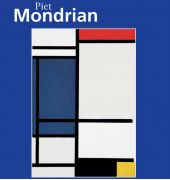 Der insgesamt der Kunstrichtung der Klassischen Moderne zuzurechnende Piet Mondrian (1872-1944) wurde im niederländischen Amersfort geboren. Nach seinem Studium in Amsterdam begann ers eine Künstlerkarriere im impressionistischen Stil als Figuren– und Landschaftsmaler. Seine Arbeiten aus jenen Jahren zeigen den Einfluss Vincent van Goghs (1853-1890) und des Fauvismus, einer französischen Stilrichtung aus dem Anfang des 20. Jahrhunderts. Auf seiner Reise des Jahres 1911 nach Paris entdeckte er Pablo Picassos (1881-1973) Arbeiten, damit für sich den Kubismus und wurde aufgrund dessen nach seiner Rückkehr zum Pionier der abstrakten Malereiin den Niederlanden. Seine Gemälde weisen ab den 1920er Jahren – er lebte zu dieser Zeit und für etwa zwanzig Jahre wieder in Paris – einen auf das Senkrechte und Waagerechte zurückgehenden Aufbau und damit strenge geometrische Formen auf, die, zusammen mit den Gegensätzen blauer, gelber, roter und nichtfarbiger Flächen, zu seinem Markenzeichen wurden. In New York, wo er seine letzten Jahre verbrachte, fand seine Kunst großen Anklang. Mondrian war nicht nur Maler, sondern auch Kunsttheoretiker und Mitbegründer der Kunstrichtung De Stijl. ... Далее
Der insgesamt der Kunstrichtung der Klassischen Moderne zuzurechnende Piet Mondrian (1872-1944) wurde im niederländischen Amersfort geboren. Nach seinem Studium in Amsterdam begann ers eine Künstlerkarriere im impressionistischen Stil als Figuren– und Landschaftsmaler. Seine Arbeiten aus jenen Jahren zeigen den Einfluss Vincent van Goghs (1853-1890) und des Fauvismus, einer französischen Stilrichtung aus dem Anfang des 20. Jahrhunderts. Auf seiner Reise des Jahres 1911 nach Paris entdeckte er Pablo Picassos (1881-1973) Arbeiten, damit für sich den Kubismus und wurde aufgrund dessen nach seiner Rückkehr zum Pionier der abstrakten Malereiin den Niederlanden. Seine Gemälde weisen ab den 1920er Jahren – er lebte zu dieser Zeit und für etwa zwanzig Jahre wieder in Paris – einen auf das Senkrechte und Waagerechte zurückgehenden Aufbau und damit strenge geometrische Formen auf, die, zusammen mit den Gegensätzen blauer, gelber, roter und nichtfarbiger Flächen, zu seinem Markenzeichen wurden. In New York, wo er seine letzten Jahre verbrachte, fand seine Kunst großen Anklang. Mondrian war nicht nur Maler, sondern auch Kunsttheoretiker und Mitbegründer der Kunstrichtung De Stijl. ... Далее -
12.
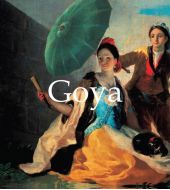 Goya ist einer der zugänglichsten Maler. Seine Kunst ist wie sein Leben ein offenes Buch und es ist nicht die Kunst einer idealen, sondern einer garstigen und unheimlichen Welt. Er kam als Sohn eines Vergolders in einem kleinen Bergdorf mit hundert Einwohnern zur Welt. Als Kind arbeitete er zusammen mit seinen Geschwistern auf dem Feld, bis sein Zeichentalent entdeckt wurde. Dank der Vermittlung eines Gönners kam er als 14-Jähriger zu einem Hofmaler in Saragossa in die Lehre und zog als 19-Jähriger nach Madrid. Abgesehen von wunderbar dekorativen Kartons für die Gobelinmanufaktur und fünf kleinen Bildern malte Goya bis zu seinem 37. Jahr nichts Bedeutendes, doch nach seiner Bestellung zum Hofmaler entfaltet er eine Produktivität, die der von Rubens nicht nachsteht. Es folgt ein zeitweise von Krankheit getrübtes Jahrzehnt unglaublichen Schaffens und der Skandale. In seinen Radierungen zeigt er sich als herausragender Zeichenkünstler. In seiner Malerei ist er stark von Velásquez beeinflusst und wie dieser von seinem Modell abhängig, wobei er sich einer rücksichtslosen Wirklichkeitstreue befleißigt, die gelegentlich auch in die Karikatur umschlägt. Hässlichkeit wird genau so dramatisiert wie Liebreiz und Schönheit. Seine Grafikzyklen, die Kaprizen und die Kapriolen sind aufs Sorgfältigste durchdacht und psychologische Meisterwerke. Seine “fantastischen Figuren” erfüllen uns mit einer hämischen Freude, regen unsere diabolischen Instinkte an und lassen uns erschauern. Am deutlichsten offenbar wird sein Genie in seinen Radierungen über die Schrecken des Krieges. Neben diesen Darstellungen wirkt jedes andere Kriegsbild blass und sentimental. Er konzentriert sich auf vereinzelte Szenen der Grausamkeit. Nirgendwo sonst zeigt er eine solche Beherrschung von Form und Bewegung, so dramatische Gesten und eine so gekonnte Wirkung von Licht und Dunkel wie in diesem Aufbegehren gegen die Gewalt. Doch malte er auch volksnahe Vergnügungen sowie Portraits. Vergessen wir nicht, dass dieser außerordentlich vielseitige Künstler auch das schönste spanische Aktbild, die Nackte Maja, schuf. ... Далее
Goya ist einer der zugänglichsten Maler. Seine Kunst ist wie sein Leben ein offenes Buch und es ist nicht die Kunst einer idealen, sondern einer garstigen und unheimlichen Welt. Er kam als Sohn eines Vergolders in einem kleinen Bergdorf mit hundert Einwohnern zur Welt. Als Kind arbeitete er zusammen mit seinen Geschwistern auf dem Feld, bis sein Zeichentalent entdeckt wurde. Dank der Vermittlung eines Gönners kam er als 14-Jähriger zu einem Hofmaler in Saragossa in die Lehre und zog als 19-Jähriger nach Madrid. Abgesehen von wunderbar dekorativen Kartons für die Gobelinmanufaktur und fünf kleinen Bildern malte Goya bis zu seinem 37. Jahr nichts Bedeutendes, doch nach seiner Bestellung zum Hofmaler entfaltet er eine Produktivität, die der von Rubens nicht nachsteht. Es folgt ein zeitweise von Krankheit getrübtes Jahrzehnt unglaublichen Schaffens und der Skandale. In seinen Radierungen zeigt er sich als herausragender Zeichenkünstler. In seiner Malerei ist er stark von Velásquez beeinflusst und wie dieser von seinem Modell abhängig, wobei er sich einer rücksichtslosen Wirklichkeitstreue befleißigt, die gelegentlich auch in die Karikatur umschlägt. Hässlichkeit wird genau so dramatisiert wie Liebreiz und Schönheit. Seine Grafikzyklen, die Kaprizen und die Kapriolen sind aufs Sorgfältigste durchdacht und psychologische Meisterwerke. Seine “fantastischen Figuren” erfüllen uns mit einer hämischen Freude, regen unsere diabolischen Instinkte an und lassen uns erschauern. Am deutlichsten offenbar wird sein Genie in seinen Radierungen über die Schrecken des Krieges. Neben diesen Darstellungen wirkt jedes andere Kriegsbild blass und sentimental. Er konzentriert sich auf vereinzelte Szenen der Grausamkeit. Nirgendwo sonst zeigt er eine solche Beherrschung von Form und Bewegung, so dramatische Gesten und eine so gekonnte Wirkung von Licht und Dunkel wie in diesem Aufbegehren gegen die Gewalt. Doch malte er auch volksnahe Vergnügungen sowie Portraits. Vergessen wir nicht, dass dieser außerordentlich vielseitige Künstler auch das schönste spanische Aktbild, die Nackte Maja, schuf. ... Далее -
13.
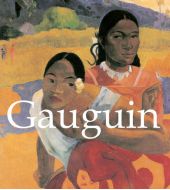 Paul Gauguin fue primero un marino y luego un exitoso corredor de bolsa en París. En 1874 comenzó a pintar los fines de semana, como pasatiempo. Nueve años después, tras la caída de la bolsa de valores, se sintió lo bastante confiado en su habilidad para ganarse la vida pintando, que renunció a su puesto y se dedicó a la pintura de tiempo completo. Siguiendo el ejemplo de Cézanne, Gauguin pintó naturalezas muertas desde el principio de su vida artística. Incluso poseía una naturaleza muerta de Cézanne, que aparece en el cuadro de Gauguin Retrato de Marie Lagadu. El año de 1891 fue crucial para Gauguin. En ese año dejó Francia y se marchó a Tahití, donde permaneció hasta 1893. Su estancia en este país determinó su vida y trayectoria futuras, ya que, en 1895, después de pasar una temporada en Francia, volvió a Tahití para siempre. En Tahití, Gauguin descubrió el arte primitivo, con sus formas planas y los colores violentos de una naturaleza salvaje. Con sinceridad absoluta, los transfirió a sus lienzos. A partir de ese momento, sus pinturas reflejaron este estilo: una simplificación radical del dibujo, colores brillantes, puros y vivos, una composición de tipo ornamental y una deliberada falta de contraste en los planos. Gauguin bautizó su estilo como “simbolismo sintético”. ... Далее
Paul Gauguin fue primero un marino y luego un exitoso corredor de bolsa en París. En 1874 comenzó a pintar los fines de semana, como pasatiempo. Nueve años después, tras la caída de la bolsa de valores, se sintió lo bastante confiado en su habilidad para ganarse la vida pintando, que renunció a su puesto y se dedicó a la pintura de tiempo completo. Siguiendo el ejemplo de Cézanne, Gauguin pintó naturalezas muertas desde el principio de su vida artística. Incluso poseía una naturaleza muerta de Cézanne, que aparece en el cuadro de Gauguin Retrato de Marie Lagadu. El año de 1891 fue crucial para Gauguin. En ese año dejó Francia y se marchó a Tahití, donde permaneció hasta 1893. Su estancia en este país determinó su vida y trayectoria futuras, ya que, en 1895, después de pasar una temporada en Francia, volvió a Tahití para siempre. En Tahití, Gauguin descubrió el arte primitivo, con sus formas planas y los colores violentos de una naturaleza salvaje. Con sinceridad absoluta, los transfirió a sus lienzos. A partir de ese momento, sus pinturas reflejaron este estilo: una simplificación radical del dibujo, colores brillantes, puros y vivos, una composición de tipo ornamental y una deliberada falta de contraste en los planos. Gauguin bautizó su estilo como “simbolismo sintético”. ... Далее -
14.
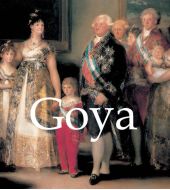 Goya es tal vez el pintor más accesible. Su arte, al igual que su vida, es un libro abierto. Nada ocultó a sus contemporáneos y les ofreció su obra con la misma franqueza. La puerta a su mundo no está oculta detrás de grandes dificultades técnicas. Fue la prueba de que si un hombre tiene la capacidad de vivir y multiplicar sus experiencias, de luchar y trabajar, puede producir grandes obras de arte sin el decoro clásico y la respetabilidad tradicional. Nació en 1746 en Fuendetodos, un pequeño pueblo montañés de un centenar de habitantes. De niño trabajó en los campos con sus dos hermanos y su hermana, hasta que su talento para el dibujo puso fin a su miseria. A los catorce años recibió el apoyo de un mecenas adinerado y se marchó a Zaragoza a estudiar con un pintor de la corte y, posteriormente, cuando cumplió diecinueve años, se fue a Madrid. Hasta los treinta y siete años, sin contar algunos diseños de tapicería de modesta calidad decorativa y cinco pequeñas pinturas, Goya no pintó nada de gran importancia, pero una vez que dominó su temperamento, produjo obras maestras con la misma velocidad que Rubens. Tras su nombramiento en la corte siguió una década de actividad incesante, años de pinturas y escándalos, con intervalos de salud deteriorada. Los grabados de Goya demuestran su gran pericia como dibujante. En la pintura, al igual que Velázquez, depende en mayor o menor medida del modelo, pero no de la manera objetiva del experto en naturalezas muertas. Si una mujer era fea, la convertía en un horror despreciable; si era atractiva, dramatizaba su encanto. Prefería terminar sus retratos en una sola sesión y era un tirano con sus modelos. Al igual que Velázquez, se concentraba en los rostros, pero dibujaba las cabezas con pericia, construyéndolas con varios tonos de grises transparentes. Su mundo en blanco y negro está habitado por formas monstruosas: se trata de las producciones en las que demuestra una reflexión más profunda. Sus figuras fantásticas, como solía llamarlas, nos llenan de una sensación de gozo vulgar, acentúan nuestros instintos diabólicos y nos deleitan con el nada caritativo éxtasis de la destrucción. Su genio alcanzó el punto culminante en sus grabados de los horrores de la guerra. Al compararlas con la obra de Goya, otras pinturas sobre este tema palidecen hasta convertirse en estudios sentimentales de la crueldad. Evitó la acción esparcida por el campo de batalla y se confinó a escenas aisladas de matanzas. En ninguna otra obra demostró tanto dominio de la forma y el movimiento, tantos gestos dramáticos y efectos sorprendentes de luz y sombra. En todos estos aspectos, Goya fue un renovador e innovador. ... Далее
Goya es tal vez el pintor más accesible. Su arte, al igual que su vida, es un libro abierto. Nada ocultó a sus contemporáneos y les ofreció su obra con la misma franqueza. La puerta a su mundo no está oculta detrás de grandes dificultades técnicas. Fue la prueba de que si un hombre tiene la capacidad de vivir y multiplicar sus experiencias, de luchar y trabajar, puede producir grandes obras de arte sin el decoro clásico y la respetabilidad tradicional. Nació en 1746 en Fuendetodos, un pequeño pueblo montañés de un centenar de habitantes. De niño trabajó en los campos con sus dos hermanos y su hermana, hasta que su talento para el dibujo puso fin a su miseria. A los catorce años recibió el apoyo de un mecenas adinerado y se marchó a Zaragoza a estudiar con un pintor de la corte y, posteriormente, cuando cumplió diecinueve años, se fue a Madrid. Hasta los treinta y siete años, sin contar algunos diseños de tapicería de modesta calidad decorativa y cinco pequeñas pinturas, Goya no pintó nada de gran importancia, pero una vez que dominó su temperamento, produjo obras maestras con la misma velocidad que Rubens. Tras su nombramiento en la corte siguió una década de actividad incesante, años de pinturas y escándalos, con intervalos de salud deteriorada. Los grabados de Goya demuestran su gran pericia como dibujante. En la pintura, al igual que Velázquez, depende en mayor o menor medida del modelo, pero no de la manera objetiva del experto en naturalezas muertas. Si una mujer era fea, la convertía en un horror despreciable; si era atractiva, dramatizaba su encanto. Prefería terminar sus retratos en una sola sesión y era un tirano con sus modelos. Al igual que Velázquez, se concentraba en los rostros, pero dibujaba las cabezas con pericia, construyéndolas con varios tonos de grises transparentes. Su mundo en blanco y negro está habitado por formas monstruosas: se trata de las producciones en las que demuestra una reflexión más profunda. Sus figuras fantásticas, como solía llamarlas, nos llenan de una sensación de gozo vulgar, acentúan nuestros instintos diabólicos y nos deleitan con el nada caritativo éxtasis de la destrucción. Su genio alcanzó el punto culminante en sus grabados de los horrores de la guerra. Al compararlas con la obra de Goya, otras pinturas sobre este tema palidecen hasta convertirse en estudios sentimentales de la crueldad. Evitó la acción esparcida por el campo de batalla y se confinó a escenas aisladas de matanzas. En ninguna otra obra demostró tanto dominio de la forma y el movimiento, tantos gestos dramáticos y efectos sorprendentes de luz y sombra. En todos estos aspectos, Goya fue un renovador e innovador. ... Далее -
15.
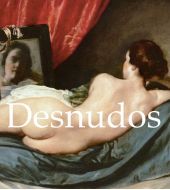 El concepto de desnudo puede llevar de la mano connotaciones fundamentales diferentes, en tanto que el cuerpo sin ropa es susceptible de suscitar sensaciones tanto de placer como de vergüenza, sirviendo como símbolo de ideas contradictorias: la belleza y la indecencia. Este libro está dedicado a representaciones de desnudos realizadas por grandes artistas de todos los tiempos, desde la antigüedad y el Renacimiento italiano al Impresionismo francés y el arte contemporáneo, de Botticelli y Miguel Ángel a Cézanne, Renoir, Picasso y Botero. Este libro, de bella factura, reúne una colección que hará las delicias de todos los amantes del arte. ... Далее
El concepto de desnudo puede llevar de la mano connotaciones fundamentales diferentes, en tanto que el cuerpo sin ropa es susceptible de suscitar sensaciones tanto de placer como de vergüenza, sirviendo como símbolo de ideas contradictorias: la belleza y la indecencia. Este libro está dedicado a representaciones de desnudos realizadas por grandes artistas de todos los tiempos, desde la antigüedad y el Renacimiento italiano al Impresionismo francés y el arte contemporáneo, de Botticelli y Miguel Ángel a Cézanne, Renoir, Picasso y Botero. Este libro, de bella factura, reúne una colección que hará las delicias de todos los amantes del arte. ... Далее -
16.
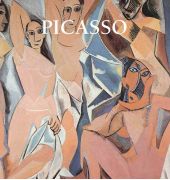 Picasso era español y por eso, según dicen, comenzó a dibujar antes que a hablar. Cuando niño, se sintió atraído de manera instintiva hacia las herramientas del artista. En sus primeros años pasaba horas en feliz concentración dibujando espirales con un sentido y un significado que sólo él conocía. Otras veces dejaba de lado sus juegos infantiles para trazar sus primeras imágenes en la arena. Tan temprana expresión artística encerraba la promesa de un raro don. No hay que olvidar hacer mención de Málaga, pues fue ahí donde, el 25 de octubre de 1881, nació Pablo Ruiz Picasso, y fue ahí donde pasó los primeros diez años de su vida. El padre de Picasso era pintor y profesor en la Escuela de Bellas Artes y Oficios. Picasso aprendió de él los rudimentos del entrenamiento académico formal en arte. Luego fue a estudiar a la Academia de las Artes en Madrid, pero no se graduó. Antes de cumplir los dieciocho años había llegado al punto de mayor rebeldía; repudió la estética anémica de la academia junto con la prosa pedestre del realismo y, naturalmente, se unió a aquellos artistas y escritores que se llamaban a sí mismos modernistas, a los inconformistas, aquellos a los que Sabartés llamó “la élite del pensamiento catalán” y que se habían agrupado en torno al café de artistas Els Quatre Gats. Durante 1899 y 1900 los únicos temas que Picasso consideró meritorios fueron aquellos que reflejaban la “verdad final”, la fugacidad de la vida humana y la inevitabilidad de la muerte. Sus primeras obras, agrupadas bajo el nombre de “Periodo Azul” (1901-1904), consisten en pinturas con matices azulados y fueron el resultado de la influencia de un viaje que realizó por España y de la muerte de su amigo Casagemas. Aunque Picasso mismo insistió varias veces en la naturaleza subjetiva e interna de su Periodo Azul, su génesis y, en especial, el azul monocromático se explicaron durante muchos años como el simple resultado de varias influencias estéticas. Entre 1905 y 1907, Picasso inició un nuevo periodo, conocido como el “Periodo Rosa”, que se caracterizó por un estilo más alegre con colores rosados y anaranjados. En Gosol, en el verano de 1906, la forma del desnudo femenino asumió una importancia extraordinaria para Picasso; identificó una desnudez despersonalizada, original y simple con el concepto de “mujer”. La importancia que los desnudos femeninos tendrían para Picasso en cuanto a temática durante los siguientes meses (en el invierno y la primavera de 1907) se hizo patente cuando creó la composición de una pintura grande titulada Las señoritas de Aviñón. De la misma manera que el arte africano se considera como el factor que llevó al desarrollo de la estética clásica de Picasso en 1907, las lecciones de Cézanne se perciben como la piedra angular de este nuevo avance. Esto se relaciona, en primer lugar, con la concepción espacial del lienzo como una entidad compuesta, sujeta a un determinado sistema de construcción. Georges Braque, a quien Picasso conoció en el otoño de 1908 y con quien encabezó el movimiento cubista durante los seis años de su apogeo, quedó asombrado por la semejanza que los experimentos pictóricos de Picasso guardaban con los suyos. En cierto momento, explicó: “La dirección principal del cubismo era la materialización del espacio”. Después de su periodo cubista, en la década de 1920, Picasso volvió a un estilo artístico más figurativo y se acercó más al movimiento surrealista. Representó cuerpos monstruosos y distorsionados, pero en un estilo muy personal. Después del bombardeo de Guernica en 1937, Picasso creó una de sus obras más famosas, que se convirtió en símbolo crudo de los horrores de esa guerra y, de hecho, de todas las guerras. En la década de 1960, su estilo artístico cambió de nuevo y Picasso comenzó a volver la mirada al arte de los grandes maestros y a basar sus pinturas en la obra de Velázquez, Poussin, Goya, Manet, Courbet y Delacroix. Los últimos trabajos de Picasso fueron una mezcla de estilos que dio lugar a una obra más colorida, expresiva y optimista. Picasso murió en 1973, en su villa de Mougins. El simbolista ruso Georgy Chulkov escribió: “La muerte de Picasso es una tragedia. Sin embargo, aquellos que creen que pueden imitar a Picasso y aprender de él son ciegos e inocentes. ¿Aprender qué? Estas formas no tienen una contraparte emocional fuera del infierno, pero estar en el infierno significa anticipar la muerte. Los cubistas difícilmente cuentan con un conocimiento tan ilimitado”. ... Далее
Picasso era español y por eso, según dicen, comenzó a dibujar antes que a hablar. Cuando niño, se sintió atraído de manera instintiva hacia las herramientas del artista. En sus primeros años pasaba horas en feliz concentración dibujando espirales con un sentido y un significado que sólo él conocía. Otras veces dejaba de lado sus juegos infantiles para trazar sus primeras imágenes en la arena. Tan temprana expresión artística encerraba la promesa de un raro don. No hay que olvidar hacer mención de Málaga, pues fue ahí donde, el 25 de octubre de 1881, nació Pablo Ruiz Picasso, y fue ahí donde pasó los primeros diez años de su vida. El padre de Picasso era pintor y profesor en la Escuela de Bellas Artes y Oficios. Picasso aprendió de él los rudimentos del entrenamiento académico formal en arte. Luego fue a estudiar a la Academia de las Artes en Madrid, pero no se graduó. Antes de cumplir los dieciocho años había llegado al punto de mayor rebeldía; repudió la estética anémica de la academia junto con la prosa pedestre del realismo y, naturalmente, se unió a aquellos artistas y escritores que se llamaban a sí mismos modernistas, a los inconformistas, aquellos a los que Sabartés llamó “la élite del pensamiento catalán” y que se habían agrupado en torno al café de artistas Els Quatre Gats. Durante 1899 y 1900 los únicos temas que Picasso consideró meritorios fueron aquellos que reflejaban la “verdad final”, la fugacidad de la vida humana y la inevitabilidad de la muerte. Sus primeras obras, agrupadas bajo el nombre de “Periodo Azul” (1901-1904), consisten en pinturas con matices azulados y fueron el resultado de la influencia de un viaje que realizó por España y de la muerte de su amigo Casagemas. Aunque Picasso mismo insistió varias veces en la naturaleza subjetiva e interna de su Periodo Azul, su génesis y, en especial, el azul monocromático se explicaron durante muchos años como el simple resultado de varias influencias estéticas. Entre 1905 y 1907, Picasso inició un nuevo periodo, conocido como el “Periodo Rosa”, que se caracterizó por un estilo más alegre con colores rosados y anaranjados. En Gosol, en el verano de 1906, la forma del desnudo femenino asumió una importancia extraordinaria para Picasso; identificó una desnudez despersonalizada, original y simple con el concepto de “mujer”. La importancia que los desnudos femeninos tendrían para Picasso en cuanto a temática durante los siguientes meses (en el invierno y la primavera de 1907) se hizo patente cuando creó la composición de una pintura grande titulada Las señoritas de Aviñón. De la misma manera que el arte africano se considera como el factor que llevó al desarrollo de la estética clásica de Picasso en 1907, las lecciones de Cézanne se perciben como la piedra angular de este nuevo avance. Esto se relaciona, en primer lugar, con la concepción espacial del lienzo como una entidad compuesta, sujeta a un determinado sistema de construcción. Georges Braque, a quien Picasso conoció en el otoño de 1908 y con quien encabezó el movimiento cubista durante los seis años de su apogeo, quedó asombrado por la semejanza que los experimentos pictóricos de Picasso guardaban con los suyos. En cierto momento, explicó: “La dirección principal del cubismo era la materialización del espacio”. Después de su periodo cubista, en la década de 1920, Picasso volvió a un estilo artístico más figurativo y se acercó más al movimiento surrealista. Representó cuerpos monstruosos y distorsionados, pero en un estilo muy personal. Después del bombardeo de Guernica en 1937, Picasso creó una de sus obras más famosas, que se convirtió en símbolo crudo de los horrores de esa guerra y, de hecho, de todas las guerras. En la década de 1960, su estilo artístico cambió de nuevo y Picasso comenzó a volver la mirada al arte de los grandes maestros y a basar sus pinturas en la obra de Velázquez, Poussin, Goya, Manet, Courbet y Delacroix. Los últimos trabajos de Picasso fueron una mezcla de estilos que dio lugar a una obra más colorida, expresiva y optimista. Picasso murió en 1973, en su villa de Mougins. El simbolista ruso Georgy Chulkov escribió: “La muerte de Picasso es una tragedia. Sin embargo, aquellos que creen que pueden imitar a Picasso y aprender de él son ciegos e inocentes. ¿Aprender qué? Estas formas no tienen una contraparte emocional fuera del infierno, pero estar en el infierno significa anticipar la muerte. Los cubistas difícilmente cuentan con un conocimiento tan ilimitado”. ... Далее -
17.
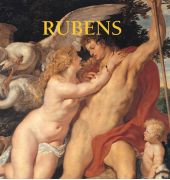 El arte ecléctico con el que soñaba la familia Carracci quedó finalmente plasmado en la obra de Rubens, con toda la facilidad del genio. Sin embargo, el problema era mucho más complicado para un hombre del norte, que deseaba añadir una fusión de los espíritus flamenco y latino, algo cuya dificultad se había reflejado en los intentos más bien pedantes del romanismo. Lo logró sin perder nada de su desbordante personalidad, su inquieta imaginación y los descubrimientos llenos de encanto del pintor con el mejor manejo del color que haya existido. Rubens, el gran maestro de la exuberancia de la pintura barroca, tomó del Renacimiento italiano lo que le fue útil, y sobre ello construyó un estilo propio. Se le distingue por un maravilloso dominio de la forma humana y una riqueza sorprendente en sus colores espléndidamente iluminados. Fue un hombre de gran aplomo intelectual y estaba acostumbrado a la vida mundana, dado que viajaba de una corte a otra con gran pompa, como un enviado de confianza. Rubens fue uno de esos raros mortales que realmente son una honra para la humanidad. Era atractivo, bueno y generoso, y amaba la virtud. El trabajo era su vida, con cada cosa en su lugar. El creador de tantos magníficos festines paganos iba cada mañana a misa antes de dirigirse a su estudio. Fue la personificación más ilustre de la felicidad perfectamente equilibrada con el genio, y combinaba en su persona la pasión y la ciencia, el fervor y la reflexión. Rubens sabía expresar el drama al igual que la alegría, ya que nada humano le era ajeno y podía recrear a voluntad todo el patetismo y la expresión del color cuando lo necesitaba para sus obras maestras de temas religiosos. Podría decirse que fue tan prolífico en la representación de la alegría y la exuberancia de la vida como Miguel Ángel en la representación de emociones apasionadas. ... Далее
El arte ecléctico con el que soñaba la familia Carracci quedó finalmente plasmado en la obra de Rubens, con toda la facilidad del genio. Sin embargo, el problema era mucho más complicado para un hombre del norte, que deseaba añadir una fusión de los espíritus flamenco y latino, algo cuya dificultad se había reflejado en los intentos más bien pedantes del romanismo. Lo logró sin perder nada de su desbordante personalidad, su inquieta imaginación y los descubrimientos llenos de encanto del pintor con el mejor manejo del color que haya existido. Rubens, el gran maestro de la exuberancia de la pintura barroca, tomó del Renacimiento italiano lo que le fue útil, y sobre ello construyó un estilo propio. Se le distingue por un maravilloso dominio de la forma humana y una riqueza sorprendente en sus colores espléndidamente iluminados. Fue un hombre de gran aplomo intelectual y estaba acostumbrado a la vida mundana, dado que viajaba de una corte a otra con gran pompa, como un enviado de confianza. Rubens fue uno de esos raros mortales que realmente son una honra para la humanidad. Era atractivo, bueno y generoso, y amaba la virtud. El trabajo era su vida, con cada cosa en su lugar. El creador de tantos magníficos festines paganos iba cada mañana a misa antes de dirigirse a su estudio. Fue la personificación más ilustre de la felicidad perfectamente equilibrada con el genio, y combinaba en su persona la pasión y la ciencia, el fervor y la reflexión. Rubens sabía expresar el drama al igual que la alegría, ya que nada humano le era ajeno y podía recrear a voluntad todo el patetismo y la expresión del color cuando lo necesitaba para sus obras maestras de temas religiosos. Podría decirse que fue tan prolífico en la representación de la alegría y la exuberancia de la vida como Miguel Ángel en la representación de emociones apasionadas. ... Далее -
18.
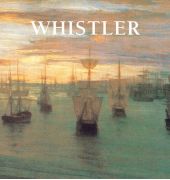 Whistler saltó repentinamente a la fama, como una estrella errante en un momento crucial en la historia del arte, un campo en el que fue pionero. Como los impresionistas a los que admiraba, deseaba imponer sus propias ideas. La obra de Whistler puede dividirse en cuatro periodos. El primero puede llamarse periodo de investigación, en el cual recibió la influencia del realismo de Gustave Courbet y del arte japonés. Después, Whistler descubrió su propia originalidad en la serie de Nocturnos y de los Jardines de Cremorne, con las que entró en conflicto con los academicistas, que querían que un trabajo artístico contara una historia. Cuando pintó el retrato de su madre, Whistler lo tituló Composición en gris y negro y fue una obra simbólica de sus teorías estéticas. Cuando pintó Los jardines del placer de Cremorne no lo hizo para representar figuras identificables, como hizo Renoir cuando tocó temas similares, sino para capturar la atmósfera. Adoraba la bruma que flotaba sobre las orillas del Támesis, la luz pálida y las chimeneas de las fábricas que por las noches se convertían en mágicos minaretes. La noche redibujaba el paisaje, borrando los detalles. Este fue el periodo en el que se convirtió en un aventurero del arte; su obra, que rayaba en la abstracción, escandalizó a sus contemporáneos. El tercer periodo está dominado por los retratos de cuerpo completo, que le dieron fama. Era capaz de imbuir una profunda originalidad a este género tradicional. Trató de capturar una parte del alma de sus modelos y colocó a sus personajes en su entorno natural. Esto daba a sus modelos una extraña presencia, de modo que parecen a punto de levantarse y salirse del cuadro para enfrentar al observador. Al extraer la esencia poética de las personas, creó retratos que sus contemporáneos describían como “medios”, y que fueron la inspiración para que Oscar Wilde escribiera El retrato de Dorian Gray. Hacia el final de su vida, el artista comenzó a pintar paisajes y retratos en la tradición clásica, con una fuerte influencia de Velázquez. Whistler demostró ser sumamente riguroso en cuanto a que sus pinturas coincidieran con sus teorías. Jamás titubeó en batirse con los más famosos teóricos del arte de su día. Su personalidad, sus arrebatos y su elegancia fueron el foco perfecto para la curiosidad y la admiración. Fue amigo cercano de Stéphane Mallarmé y fue admirado por Marcel Proust, quien le rindió homenaje en su libro En busca del tiempo perdido. También fue un caballero provocativo, una figura quisquillosa de sociedad, artista exigente y osado innovador. ... Далее
Whistler saltó repentinamente a la fama, como una estrella errante en un momento crucial en la historia del arte, un campo en el que fue pionero. Como los impresionistas a los que admiraba, deseaba imponer sus propias ideas. La obra de Whistler puede dividirse en cuatro periodos. El primero puede llamarse periodo de investigación, en el cual recibió la influencia del realismo de Gustave Courbet y del arte japonés. Después, Whistler descubrió su propia originalidad en la serie de Nocturnos y de los Jardines de Cremorne, con las que entró en conflicto con los academicistas, que querían que un trabajo artístico contara una historia. Cuando pintó el retrato de su madre, Whistler lo tituló Composición en gris y negro y fue una obra simbólica de sus teorías estéticas. Cuando pintó Los jardines del placer de Cremorne no lo hizo para representar figuras identificables, como hizo Renoir cuando tocó temas similares, sino para capturar la atmósfera. Adoraba la bruma que flotaba sobre las orillas del Támesis, la luz pálida y las chimeneas de las fábricas que por las noches se convertían en mágicos minaretes. La noche redibujaba el paisaje, borrando los detalles. Este fue el periodo en el que se convirtió en un aventurero del arte; su obra, que rayaba en la abstracción, escandalizó a sus contemporáneos. El tercer periodo está dominado por los retratos de cuerpo completo, que le dieron fama. Era capaz de imbuir una profunda originalidad a este género tradicional. Trató de capturar una parte del alma de sus modelos y colocó a sus personajes en su entorno natural. Esto daba a sus modelos una extraña presencia, de modo que parecen a punto de levantarse y salirse del cuadro para enfrentar al observador. Al extraer la esencia poética de las personas, creó retratos que sus contemporáneos describían como “medios”, y que fueron la inspiración para que Oscar Wilde escribiera El retrato de Dorian Gray. Hacia el final de su vida, el artista comenzó a pintar paisajes y retratos en la tradición clásica, con una fuerte influencia de Velázquez. Whistler demostró ser sumamente riguroso en cuanto a que sus pinturas coincidieran con sus teorías. Jamás titubeó en batirse con los más famosos teóricos del arte de su día. Su personalidad, sus arrebatos y su elegancia fueron el foco perfecto para la curiosidad y la admiración. Fue amigo cercano de Stéphane Mallarmé y fue admirado por Marcel Proust, quien le rindió homenaje en su libro En busca del tiempo perdido. También fue un caballero provocativo, una figura quisquillosa de sociedad, artista exigente y osado innovador. ... Далее -
19.
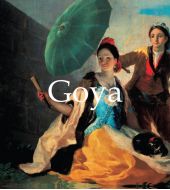 Goya is perhaps the most approachable of painters. His art, like his life, is an open book. He concealed nothing from his contemporaries, and offered his art to them with the same frankness. The entrance to his world is not barricaded with technical difficulties. He proved that if a man has the capacity to live and multiply his experiences, to fight and work, he can produce great art without classical decorum and traditional respectability. He was born in 1746, in Fuendetodos, a small mountain village of a hundred inhabitants. As a child he worked in the fields with his two brothers and his sister until his talent for drawing put an end to his misery. At fourteen, supported by a wealthy patron, he went to Saragossa to study with a court painter and later, when he was nineteen, on to Madrid. Up to his thirty-seventh year, if we leave out of account the tapestry cartoons of unheralded decorative quality and five small pictures, Goya painted nothing of any significance, but once in control of his refractory powers, he produced masterpieces with the speed of Rubens. His court appointment was followed by a decade of incessant activity – years of painting and scandal, with intervals of bad health. Goya’s etchings demonstrate a draughtsmanship of the first rank. In paint, like Velázquez, he is more or less dependent on the model, but not in the detached fashion of the expert in still-life. If a woman was ugly, he made her a despicable horror; if she was alluring, he dramatised her charm. He preferred to finish his portraits at one sitting and was a tyrant with his models. Like Velázquez, he concentrated on faces, but he drew his heads cunningly, and constructed them out of tones of transparent greys. Monstrous forms inhabit his black-and-white world: these are his most profoundly deliberated productions. His fantastic figures, as he called them, fill us with a sense of ignoble joy, aggravate our devilish instincts and delight us with the uncharitable ecstasies of destruction. His genius attained its highest point in his etchings on the horrors of war. When placed beside the work of Goya, other pictures of war pale into sentimental studies of cruelty. He avoided the scattered action of the battlefield, and confined himself to isolated scenes of butchery. Nowhere else did he display such mastery of form and movement, such dramatic gestures and appalling effects of light and darkness. In all directions Goya renewed and innovated. ... Далее
Goya is perhaps the most approachable of painters. His art, like his life, is an open book. He concealed nothing from his contemporaries, and offered his art to them with the same frankness. The entrance to his world is not barricaded with technical difficulties. He proved that if a man has the capacity to live and multiply his experiences, to fight and work, he can produce great art without classical decorum and traditional respectability. He was born in 1746, in Fuendetodos, a small mountain village of a hundred inhabitants. As a child he worked in the fields with his two brothers and his sister until his talent for drawing put an end to his misery. At fourteen, supported by a wealthy patron, he went to Saragossa to study with a court painter and later, when he was nineteen, on to Madrid. Up to his thirty-seventh year, if we leave out of account the tapestry cartoons of unheralded decorative quality and five small pictures, Goya painted nothing of any significance, but once in control of his refractory powers, he produced masterpieces with the speed of Rubens. His court appointment was followed by a decade of incessant activity – years of painting and scandal, with intervals of bad health. Goya’s etchings demonstrate a draughtsmanship of the first rank. In paint, like Velázquez, he is more or less dependent on the model, but not in the detached fashion of the expert in still-life. If a woman was ugly, he made her a despicable horror; if she was alluring, he dramatised her charm. He preferred to finish his portraits at one sitting and was a tyrant with his models. Like Velázquez, he concentrated on faces, but he drew his heads cunningly, and constructed them out of tones of transparent greys. Monstrous forms inhabit his black-and-white world: these are his most profoundly deliberated productions. His fantastic figures, as he called them, fill us with a sense of ignoble joy, aggravate our devilish instincts and delight us with the uncharitable ecstasies of destruction. His genius attained its highest point in his etchings on the horrors of war. When placed beside the work of Goya, other pictures of war pale into sentimental studies of cruelty. He avoided the scattered action of the battlefield, and confined himself to isolated scenes of butchery. Nowhere else did he display such mastery of form and movement, such dramatic gestures and appalling effects of light and darkness. In all directions Goya renewed and innovated. ... Далее -
20.
 Just as there is a fundamental difference in the use of the words “naked” and “nude”, the unclothed body can evoke a feeling of delight or shame, serving as a symbol of contradictory concepts – beauty and indecency. This book is devoted to representations of the nude by great artists from antiquity and the Italian Renaissance to French Impressionism and contemporary art; from Botticelli and Michelangelo to Cézanne, Renoir, Picasso and Botero. This beautifully produced book provides a collection that will appeal to all art lovers. ... Далее
Just as there is a fundamental difference in the use of the words “naked” and “nude”, the unclothed body can evoke a feeling of delight or shame, serving as a symbol of contradictory concepts – beauty and indecency. This book is devoted to representations of the nude by great artists from antiquity and the Italian Renaissance to French Impressionism and contemporary art; from Botticelli and Michelangelo to Cézanne, Renoir, Picasso and Botero. This beautifully produced book provides a collection that will appeal to all art lovers. ... Далее -
21.
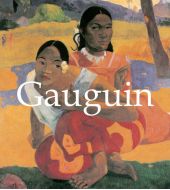 Paul Gauguin was first a sailor, then a successful stockbroker in Paris. In 1874 he began to paint at weekends as a Sunday painter. Nine years later, after a stock-market crash, he felt confident of his ability to earn a living for his family by painting and he resigned his position and took up the painter’s brush full time. Following the lead of Cézanne, Gauguin painted still-lifes from the very beginning of his artistic career. He even owned a still-life by Cézanne, which is shown in Gauguin’s painting Portrait of Marie Lagadu. The year 1891 was crucial for Gauguin. In that year he left France for Tahiti, where he stayed till 1893. This stay in Tahiti determined his future life and career, for in 1895, after a sojourn in France, he returned there for good. In Tahiti, Gauguin discovered primitive art, with its flat forms and violent colours, belonging to an untamed nature. With absolute sincerity, he transferred them onto his canvas. His paintings from then on reflected this style: a radical simplification of drawing; brilliant, pure, bright colours; an ornamental type composition; and a deliberate flatness of planes. Gauguin termed this style “synthetic symbolism”. ... Далее
Paul Gauguin was first a sailor, then a successful stockbroker in Paris. In 1874 he began to paint at weekends as a Sunday painter. Nine years later, after a stock-market crash, he felt confident of his ability to earn a living for his family by painting and he resigned his position and took up the painter’s brush full time. Following the lead of Cézanne, Gauguin painted still-lifes from the very beginning of his artistic career. He even owned a still-life by Cézanne, which is shown in Gauguin’s painting Portrait of Marie Lagadu. The year 1891 was crucial for Gauguin. In that year he left France for Tahiti, where he stayed till 1893. This stay in Tahiti determined his future life and career, for in 1895, after a sojourn in France, he returned there for good. In Tahiti, Gauguin discovered primitive art, with its flat forms and violent colours, belonging to an untamed nature. With absolute sincerity, he transferred them onto his canvas. His paintings from then on reflected this style: a radical simplification of drawing; brilliant, pure, bright colours; an ornamental type composition; and a deliberate flatness of planes. Gauguin termed this style “synthetic symbolism”. ... Далее -
22.
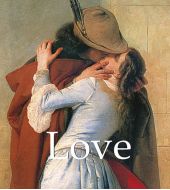 A timeless theme that cannot be ignored, love has always fascinated artists. Painters, sculptors and even architects have drawn inspiration from and illustrated it. Ever new, love has led artists to create the masterworks of their life. From Titian’s Sacred and Profane Love to Brancusi’s The Kiss, the treatment of love has changed along with time and style, but remains, in the end, an everlasting universal language. This book illustrates love in all its strength and variety. ... Далее
A timeless theme that cannot be ignored, love has always fascinated artists. Painters, sculptors and even architects have drawn inspiration from and illustrated it. Ever new, love has led artists to create the masterworks of their life. From Titian’s Sacred and Profane Love to Brancusi’s The Kiss, the treatment of love has changed along with time and style, but remains, in the end, an everlasting universal language. This book illustrates love in all its strength and variety. ... Далее -
23.
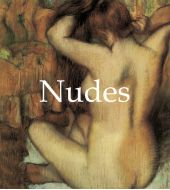 Just as there is a fundamental difference in the use of the words “naked” and “nude”, the unclothed body can evoke a feeling of delight or shame, serving as a symbol of contradictory concepts – beauty and indecency. This book is devoted to representations of the nude by great artists from antiquity and the Italian Renaissance to French Impressionism and contemporary art; from Botticelli and Michelangelo to Cézanne, Renoir, Picasso and Botero. This beautifully produced book provides a collection that will appeal to all art lovers. ... Далее
Just as there is a fundamental difference in the use of the words “naked” and “nude”, the unclothed body can evoke a feeling of delight or shame, serving as a symbol of contradictory concepts – beauty and indecency. This book is devoted to representations of the nude by great artists from antiquity and the Italian Renaissance to French Impressionism and contemporary art; from Botticelli and Michelangelo to Cézanne, Renoir, Picasso and Botero. This beautifully produced book provides a collection that will appeal to all art lovers. ... Далее -
24.
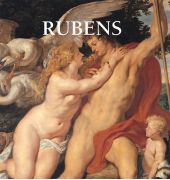 The eclectic art of which the Carracci family dreamed was realised by Rubens with the ease of genius. However, the problem was much more complicated for a man of the north, who wished to add to it a fusion of the Flemish and Latin spirits, of which the rather pedantic attempts of Romanism had illustrated the difficulties. He achieved it without losing anything of his overflowing personality, his questing imagination, and the enchanting discoveries of the greatest colourist known to painting. Rubens, the greatest master of Baroque painting’s exuberance, took from the Italian Renaissance what could be of use to him, and then built upon it a style of his own. It is distinguished by a wonderful mastery of the human form and an amazing wealth of splendidly lighted colour. He was a man of much intellectual poise and was accustomed to court life, travelling from court to court, with pomp, as a trusted envoy. Rubens was one of those rare mortals who do real honour to humanity. He was handsome, good and generous, and he loved virtue. His laborious life was well ordered. The creator of so many delightful pagan feasts went each morning to mass before proceeding to his studio. He was the most illustrious type of happy and perfectly balanced genius, and combined in his personage passion and science, ardour and reflection. Rubens expressed drama as well as joy, since nothing human was foreign to him, and he could command at will the pathos of colour and expression which he required in his religious masterpieces. It might be said that he was as prolific in the representation of the joy and exuberance of life as Michelangelo was in the representation of passionate emotions. ... Далее
The eclectic art of which the Carracci family dreamed was realised by Rubens with the ease of genius. However, the problem was much more complicated for a man of the north, who wished to add to it a fusion of the Flemish and Latin spirits, of which the rather pedantic attempts of Romanism had illustrated the difficulties. He achieved it without losing anything of his overflowing personality, his questing imagination, and the enchanting discoveries of the greatest colourist known to painting. Rubens, the greatest master of Baroque painting’s exuberance, took from the Italian Renaissance what could be of use to him, and then built upon it a style of his own. It is distinguished by a wonderful mastery of the human form and an amazing wealth of splendidly lighted colour. He was a man of much intellectual poise and was accustomed to court life, travelling from court to court, with pomp, as a trusted envoy. Rubens was one of those rare mortals who do real honour to humanity. He was handsome, good and generous, and he loved virtue. His laborious life was well ordered. The creator of so many delightful pagan feasts went each morning to mass before proceeding to his studio. He was the most illustrious type of happy and perfectly balanced genius, and combined in his personage passion and science, ardour and reflection. Rubens expressed drama as well as joy, since nothing human was foreign to him, and he could command at will the pathos of colour and expression which he required in his religious masterpieces. It might be said that he was as prolific in the representation of the joy and exuberance of life as Michelangelo was in the representation of passionate emotions. ... Далее -
25.
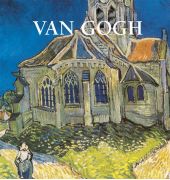 Vincent van Gogh’s life and work are so intertwined that it is hardly possible to observe one without thinking of the other. Van Gogh has indeed become the incarnation of the suffering, misunderstood martyr of modern art, the emblem of the artist as an outsider. An article, published in 1890, gave details about van Gogh’s illness. The author of the article saw the painter as “a terrible and demented genius, often sublime, sometimes grotesque, always at the brink of the pathological.” Very little is known about Vincent’s childhood. At the age of eleven he had to leave “the human nest”, as he called it himself, for various boarding schools. The first portrait shows us van Gogh as an earnest nineteen year old. At that time he had already been at work for three years in The Hague and, later, in London in the gallery Goupil & Co. In 1874 his love for Ursula Loyer ended in disaster and a year later he was transferred to Paris, against his will. After a particularly heated argument during Christmas holidays in 1881, his father, a pastor, ordered Vincent to leave. With this final break, he abandoned his family name and signed his canvases simply “Vincent”. He left for Paris and never returned to Holland. In Paris he came to know Paul Gauguin, whose paintings he greatly admired. The self-portrait was the main subject of Vincent’s work from 1886c88. In February 1888 Vincent left Paris for Arles and tried to persuade Gauguin to join him. The months of waiting for Gauguin were the most productive time in van Gogh’s life. He wanted to show his friend as many pictures as possible and decorate the Yellow House. But Gauguin did not share his views on art and finally returned to Paris. On 7 January, 1889, fourteen days after his famous self-mutilation, Vincent left the hospital where he was convalescing. Although he hoped to recover from and to forget his madness, but he actually came back twice more in the same year. During his last stay in hospital, Vincent painted landscapes in which he recreated the world of his childhood. It is said that Vincent van Gogh shot himself in the side in a field but decided to return to the inn and went to bed. The landlord informed Dr Gachet and his brother Theo, who described the last moments of his life which ended on 29 July, 1890: “I wanted to die. While I was sitting next to him promising that we would try to heal him. […], he answered, ‘La tristesse durera toujours (The sadness will last forever).’” ... Далее
Vincent van Gogh’s life and work are so intertwined that it is hardly possible to observe one without thinking of the other. Van Gogh has indeed become the incarnation of the suffering, misunderstood martyr of modern art, the emblem of the artist as an outsider. An article, published in 1890, gave details about van Gogh’s illness. The author of the article saw the painter as “a terrible and demented genius, often sublime, sometimes grotesque, always at the brink of the pathological.” Very little is known about Vincent’s childhood. At the age of eleven he had to leave “the human nest”, as he called it himself, for various boarding schools. The first portrait shows us van Gogh as an earnest nineteen year old. At that time he had already been at work for three years in The Hague and, later, in London in the gallery Goupil & Co. In 1874 his love for Ursula Loyer ended in disaster and a year later he was transferred to Paris, against his will. After a particularly heated argument during Christmas holidays in 1881, his father, a pastor, ordered Vincent to leave. With this final break, he abandoned his family name and signed his canvases simply “Vincent”. He left for Paris and never returned to Holland. In Paris he came to know Paul Gauguin, whose paintings he greatly admired. The self-portrait was the main subject of Vincent’s work from 1886c88. In February 1888 Vincent left Paris for Arles and tried to persuade Gauguin to join him. The months of waiting for Gauguin were the most productive time in van Gogh’s life. He wanted to show his friend as many pictures as possible and decorate the Yellow House. But Gauguin did not share his views on art and finally returned to Paris. On 7 January, 1889, fourteen days after his famous self-mutilation, Vincent left the hospital where he was convalescing. Although he hoped to recover from and to forget his madness, but he actually came back twice more in the same year. During his last stay in hospital, Vincent painted landscapes in which he recreated the world of his childhood. It is said that Vincent van Gogh shot himself in the side in a field but decided to return to the inn and went to bed. The landlord informed Dr Gachet and his brother Theo, who described the last moments of his life which ended on 29 July, 1890: “I wanted to die. While I was sitting next to him promising that we would try to heal him. […], he answered, ‘La tristesse durera toujours (The sadness will last forever).’” ... Далее -
26.
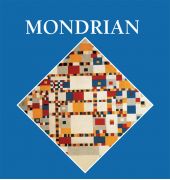 Piet Mondrian (1872-1944), who can be assigned to the school of classical modernism, was born in Amersfort, Netherlands. After studying in Amsterdam, he started his artist´s career in the impressionist style as a figure and landscape painter. His works from these years showed the influence of Vincent Van Gogh (1853-1890) and of Fauvism, a French school from the beginning of the 20th century. When he traveled to Paris in 1911, he discovered Pablo Picasso´s works (1881-1973) and, with that, Cubism. He thereafter became a pioneer of abstract painting in the Netherlands. From the 1920s on, his paintings show a vertical and horizontal composition that, combined with the oppositions of blue, yellow, red, and noncolored spaces, turned into his trademark. His art was very appreciated in New York, where he spent his last years. Mondrian was not only a painter but also an art theoretician and cofounder of the art school De Stijl. ... Далее
Piet Mondrian (1872-1944), who can be assigned to the school of classical modernism, was born in Amersfort, Netherlands. After studying in Amsterdam, he started his artist´s career in the impressionist style as a figure and landscape painter. His works from these years showed the influence of Vincent Van Gogh (1853-1890) and of Fauvism, a French school from the beginning of the 20th century. When he traveled to Paris in 1911, he discovered Pablo Picasso´s works (1881-1973) and, with that, Cubism. He thereafter became a pioneer of abstract painting in the Netherlands. From the 1920s on, his paintings show a vertical and horizontal composition that, combined with the oppositions of blue, yellow, red, and noncolored spaces, turned into his trademark. His art was very appreciated in New York, where he spent his last years. Mondrian was not only a painter but also an art theoretician and cofounder of the art school De Stijl. ... Далее -
27.
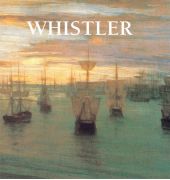 Whistler suddenly shot to fame like a meteor at a crucial moment in the history of art, a field in which he was a pioneer. Like the impressionists, with whom he sided, he wanted to impose his own ideas. Whistler’s work can be divided into four periods. The first may be called a period of research in which he was influenced by the Realism of Gustave Courbet and by Japanese art. Whistler then discovered his own originality in the Nocturnes and the Cremorne Gardens series, thereby coming into conflict with the academics who wanted a work of art to tell a story. When he painted the portrait of his mother, Whistler entitled it Arrangement in Grey and Black and this is symbolic of his aesthetic theories. When painting the Cremorne Pleasure Gardens it was not to depict identifiable figures, as did Renoir in his work on similar themes, but to capture an atmosphere. He loved the mists that hovered over the banks of the Thames, the pale light, and the factory chimneys which at night turned into magical minarets. Night redrew landscapes, effacing the details. This was the period in which he became an adventurer in art; his work, which verged on abstraction, shocked his contemporaries. The third period is dominated by the full-length portraits that brought him his fame. He was able to imbue this traditional genre with his profound originality. He tried to capture part of the souls of his models and placed the characters in their natural habitats. This gave his models a strange presence so that they seem about to walk out of the picture to physically encounter the viewer. By extracting the poetic substance from individuals he created portraits described as “mediums” by his contemporaries, and which were the inspiration for Oscar Wilde’s The Picture of Dorian Gray. Towards the end of his life, the artist began painting landscapes and portraits in the classical tradition, strongly influenced by Velázquez. Whistler proved to be extremely rigorous in ensuring his paintings coincided with his theories. He never hesitated in crossing swords with the most famous art theoreticians of his day. His personality, his outbursts, and his elegance were a perfect focus for curiosity and admiration. He was a close friend of Stéphane Mallarmé, and admired by Marcel Proust, who rendered homage to him in A La Recherche du Temps Perdu. He was also a provocative dandy, a prickly socialite, a demanding artist, and a daring innovator. ... Далее
Whistler suddenly shot to fame like a meteor at a crucial moment in the history of art, a field in which he was a pioneer. Like the impressionists, with whom he sided, he wanted to impose his own ideas. Whistler’s work can be divided into four periods. The first may be called a period of research in which he was influenced by the Realism of Gustave Courbet and by Japanese art. Whistler then discovered his own originality in the Nocturnes and the Cremorne Gardens series, thereby coming into conflict with the academics who wanted a work of art to tell a story. When he painted the portrait of his mother, Whistler entitled it Arrangement in Grey and Black and this is symbolic of his aesthetic theories. When painting the Cremorne Pleasure Gardens it was not to depict identifiable figures, as did Renoir in his work on similar themes, but to capture an atmosphere. He loved the mists that hovered over the banks of the Thames, the pale light, and the factory chimneys which at night turned into magical minarets. Night redrew landscapes, effacing the details. This was the period in which he became an adventurer in art; his work, which verged on abstraction, shocked his contemporaries. The third period is dominated by the full-length portraits that brought him his fame. He was able to imbue this traditional genre with his profound originality. He tried to capture part of the souls of his models and placed the characters in their natural habitats. This gave his models a strange presence so that they seem about to walk out of the picture to physically encounter the viewer. By extracting the poetic substance from individuals he created portraits described as “mediums” by his contemporaries, and which were the inspiration for Oscar Wilde’s The Picture of Dorian Gray. Towards the end of his life, the artist began painting landscapes and portraits in the classical tradition, strongly influenced by Velázquez. Whistler proved to be extremely rigorous in ensuring his paintings coincided with his theories. He never hesitated in crossing swords with the most famous art theoreticians of his day. His personality, his outbursts, and his elegance were a perfect focus for curiosity and admiration. He was a close friend of Stéphane Mallarmé, and admired by Marcel Proust, who rendered homage to him in A La Recherche du Temps Perdu. He was also a provocative dandy, a prickly socialite, a demanding artist, and a daring innovator. ... Далее -
28.
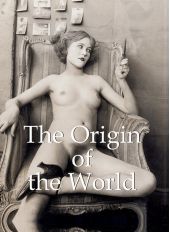 Lacan, the last owner of Courbet’s The Origin of the World, loved the painting so much that he couldn’t even bring himself to look at it. Instead, he hid it behind a “safer” painting. The Chinese called it the “valley of the roses” (watch out for the thorns!), the Persians, the “honey-pot” (watch out for the bees!), and the Greeks, “the mound of Venus” (mind the steep climb!); to each era its fantasies and its theories about the feminine mystique. Then there are the testimonies of poets, painters, and even of some famous psychiatrists. The Origin of the World is a work of art only suitable for lovers of intrigue. ... Далее
Lacan, the last owner of Courbet’s The Origin of the World, loved the painting so much that he couldn’t even bring himself to look at it. Instead, he hid it behind a “safer” painting. The Chinese called it the “valley of the roses” (watch out for the thorns!), the Persians, the “honey-pot” (watch out for the bees!), and the Greeks, “the mound of Venus” (mind the steep climb!); to each era its fantasies and its theories about the feminine mystique. Then there are the testimonies of poets, painters, and even of some famous psychiatrists. The Origin of the World is a work of art only suitable for lovers of intrigue. ... Далее -
29.
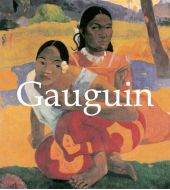 Paul Gauguin was first a sailor, then a successful stockbroker in Paris. In 1874 he began to paint at weekends as a Sunday painter. Nine years later, after a stock-market crash, he felt confident of his ability to earn a living for his family by painting and he resigned his position and took up the painter’s brush full time. Following the lead of Cézanne, Gauguin painted still-lifes from the very beginning of his artistic career. He even owned a still-life by Cézanne, which is shown in Gauguin’s painting Portrait of Marie Lagadu. The year 1891 was crucial for Gauguin. In that year he left France for Tahiti, where he stayed till 1893. This stay in Tahiti determined his future life and career, for in 1895, after a sojourn in France, he returned there for good. In Tahiti, Gauguin discovered primitive art, with its flat forms and violent colours, belonging to an untamed nature. With absolute sincerity, he transferred them onto his canvas. His paintings from then on reflected this style: a radical simplification of drawing; brilliant, pure, bright colours; an ornamental type composition; and a deliberate flatness of planes. Gauguin termed this style “synthetic symbolism”. ... Далее
Paul Gauguin was first a sailor, then a successful stockbroker in Paris. In 1874 he began to paint at weekends as a Sunday painter. Nine years later, after a stock-market crash, he felt confident of his ability to earn a living for his family by painting and he resigned his position and took up the painter’s brush full time. Following the lead of Cézanne, Gauguin painted still-lifes from the very beginning of his artistic career. He even owned a still-life by Cézanne, which is shown in Gauguin’s painting Portrait of Marie Lagadu. The year 1891 was crucial for Gauguin. In that year he left France for Tahiti, where he stayed till 1893. This stay in Tahiti determined his future life and career, for in 1895, after a sojourn in France, he returned there for good. In Tahiti, Gauguin discovered primitive art, with its flat forms and violent colours, belonging to an untamed nature. With absolute sincerity, he transferred them onto his canvas. His paintings from then on reflected this style: a radical simplification of drawing; brilliant, pure, bright colours; an ornamental type composition; and a deliberate flatness of planes. Gauguin termed this style “synthetic symbolism”. ... Далее -
30.
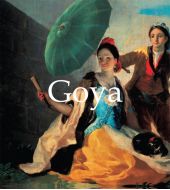 Goya is perhaps the most approachable of painters. His art, like his life, is an open book. He concealed nothing from his contemporaries, and offered his art to them with the same frankness. The entrance to his world is not barricaded with technical difficulties. He proved that if a man has the capacity to live and multiply his experiences, to fight and work, he can produce great art without classical decorum and traditional respectability. He was born in 1746, in Fuendetodos, a small mountain village of a hundred inhabitants. As a child he worked in the fields with his two brothers and his sister until his talent for drawing put an end to his misery. At fourteen, supported by a wealthy patron, he went to Saragossa to study with a court painter and later, when he was nineteen, on to Madrid. Up to his thirty-seventh year, if we leave out of account the tapestry cartoons of unheralded decorative quality and five small pictures, Goya painted nothing of any significance, but once in control of his refractory powers, he produced masterpieces with the speed of Rubens. His court appointment was followed by a decade of incessant activity – years of painting and scandal, with intervals of bad health. Goya’s etchings demonstrate a draughtsmanship of the first rank. In paint, like Velázquez, he is more or less dependent on the model, but not in the detached fashion of the expert in still-life. If a woman was ugly, he made her a despicable horror; if she was alluring, he dramatised her charm. He preferred to finish his portraits at one sitting and was a tyrant with his models. Like Velázquez, he concentrated on faces, but he drew his heads cunningly, and constructed them out of tones of transparent greys. Monstrous forms inhabit his black-and-white world: these are his most profoundly deliberated productions. His fantastic figures, as he called them, fill us with a sense of ignoble joy, aggravate our devilish instincts and delight us with the uncharitable ecstasies of destruction. His genius attained its highest point in his etchings on the horrors of war. When placed beside the work of Goya, other pictures of war pale into sentimental studies of cruelty. He avoided the scattered action of the battlefield, and confined himself to isolated scenes of butchery. Nowhere else did he display such mastery of form and movement, such dramatic gestures and appalling effects of light and darkness. In all directions Goya renewed and innovated. ... Далее
Goya is perhaps the most approachable of painters. His art, like his life, is an open book. He concealed nothing from his contemporaries, and offered his art to them with the same frankness. The entrance to his world is not barricaded with technical difficulties. He proved that if a man has the capacity to live and multiply his experiences, to fight and work, he can produce great art without classical decorum and traditional respectability. He was born in 1746, in Fuendetodos, a small mountain village of a hundred inhabitants. As a child he worked in the fields with his two brothers and his sister until his talent for drawing put an end to his misery. At fourteen, supported by a wealthy patron, he went to Saragossa to study with a court painter and later, when he was nineteen, on to Madrid. Up to his thirty-seventh year, if we leave out of account the tapestry cartoons of unheralded decorative quality and five small pictures, Goya painted nothing of any significance, but once in control of his refractory powers, he produced masterpieces with the speed of Rubens. His court appointment was followed by a decade of incessant activity – years of painting and scandal, with intervals of bad health. Goya’s etchings demonstrate a draughtsmanship of the first rank. In paint, like Velázquez, he is more or less dependent on the model, but not in the detached fashion of the expert in still-life. If a woman was ugly, he made her a despicable horror; if she was alluring, he dramatised her charm. He preferred to finish his portraits at one sitting and was a tyrant with his models. Like Velázquez, he concentrated on faces, but he drew his heads cunningly, and constructed them out of tones of transparent greys. Monstrous forms inhabit his black-and-white world: these are his most profoundly deliberated productions. His fantastic figures, as he called them, fill us with a sense of ignoble joy, aggravate our devilish instincts and delight us with the uncharitable ecstasies of destruction. His genius attained its highest point in his etchings on the horrors of war. When placed beside the work of Goya, other pictures of war pale into sentimental studies of cruelty. He avoided the scattered action of the battlefield, and confined himself to isolated scenes of butchery. Nowhere else did he display such mastery of form and movement, such dramatic gestures and appalling effects of light and darkness. In all directions Goya renewed and innovated. ... Далее -
31.
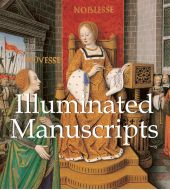 Those who have had the chance to hold a medieval manuscript in their hands cannot fail to have been impressed by the feeling of being in touch with a long-passed epoch. Back when a book was a true handicraft and every copy the result of a laborious process, the object was more a work of art than a volatile commercial product. The Mega Square Illuminated Manuscripts puts the reader in touch with amazing medieval illustrations and unique adornments, which document the imaginative power of their creators. ... Далее
Those who have had the chance to hold a medieval manuscript in their hands cannot fail to have been impressed by the feeling of being in touch with a long-passed epoch. Back when a book was a true handicraft and every copy the result of a laborious process, the object was more a work of art than a volatile commercial product. The Mega Square Illuminated Manuscripts puts the reader in touch with amazing medieval illustrations and unique adornments, which document the imaginative power of their creators. ... Далее -
32.
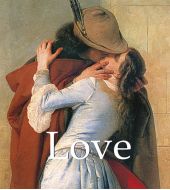 A timeless theme that cannot be ignored, love has always fascinated artists. Painters, sculptors and even architects have drawn inspiration from and illustrated it. Ever new, love has led artists to create the masterworks of their life. From Titian’s Sacred and Profane Love to Brancusi’s The Kiss, the treatment of love has changed along with time and style, but remains, in the end, an everlasting universal language. This book illustrates love in all its strength and variety. ... Далее
A timeless theme that cannot be ignored, love has always fascinated artists. Painters, sculptors and even architects have drawn inspiration from and illustrated it. Ever new, love has led artists to create the masterworks of their life. From Titian’s Sacred and Profane Love to Brancusi’s The Kiss, the treatment of love has changed along with time and style, but remains, in the end, an everlasting universal language. This book illustrates love in all its strength and variety. ... Далее -
33.
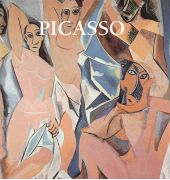 Picasso was born a Spaniard and, so they say, began to draw before he could speak. As an infant he was instinctively attracted to artist’s tools. In early childhood he could spend hours in happy concentration drawing spirals with a sense and meaning known only to himself. At other times, shunning children’s games, he traced his first pictures in the sand. This early self-expression held out promise of a rare gift. Málaga must be mentioned, for it was there, on 25 October 1881, that Pablo Ruiz Picasso was born and it was there that he spent the first ten years of his life. Picasso’s father was a painter and professor at the School of Fine Arts and Crafts. Picasso learnt from him the basics of formal academic art training. Then he studied at the Academy of Arts in Madrid but never finished his degree. Picasso, who was not yet eighteen, had reached the point of his greatest rebelliousness; he repudiated academia’s anemic aesthetics along with realism’s pedestrian prose and, quite naturally, joined those who called themselves modernists, the non-conformist artists and writers, those whom Sabartés called “the élite of Catalan thought” and who were grouped around the artists’ café Els Quatre Gats. During 1899 and 1900 the only subjects Picasso deemed worthy of painting were those which reflected the “final truth”; the transience of human life and the inevitability of death. His early works, ranged under the name of “Blue Period” (1901-1904), consist in blue-tinted paintings influenced by a trip through Spain and the death of his friend, Casagemas. Even though Picasso himself repeatedly insisted on the inner, subjective nature of the Blue Period, its genesis and, especially, the monochromatic blue were for many years explained as merely the results of various aesthetic influences. Between 1905 and 1907, Picasso entered a new phase, called “Rose Period” characterised by a more cheerful style with orange and pink colours. In Gosol, in the summer of 1906 the nude female form assumed an extraordinary importance for Picasso; he equated a depersonalised, aboriginal, simple nakedness with the concept of “woman”. The importance that female nudes were to assume as subjects for Picasso in the next few months (in the winter and spring of 1907) came when he developed the composition of the large painting, Les Demoiselles d’Avignon. Just as African art is usually considered the factor leading to the development of Picasso’s classic aesthetics in 1907, the lessons of Cézanne are perceived as the cornerstone of this new progression. This relates, first of all, to a spatial conception of the canvas as a composed entity, subjected to a certain constructive system. Georges Braque, with whom Picasso became friends in the autumn of 1908 and together with whom he led Cubism during the six years of its apogee, was amazed by the similarity of Picasso’s pictorial experiments to his own. He explained that: “Cubism’s main direction was the materialisation of space.” After his Cubist period, in the 1920s, Picasso returned to a more figurative style and got closer to the surrealist movement. He represented distorted and monstrous bodies but in a very personal style. After the bombing of Guernica during 1937, Picasso made one of his most famous works which starkly symbolises the horrors of that war and, indeed, all wars. In the 1960s, his art changed again and Picasso began looking at the art of great masters and based his paintings on ones by Velázquez, Poussin, Goya, Manet, Courbet and Delacroix. Picasso’s final works were a mixture of style, becoming more colourful, expressive and optimistic. Picasso died in 1973, in his villa in Mougins. The Russian Symbolist Georgy Chulkov wrote: “Picasso’s death is tragic. Yet how blind and naïve are those who believe in imitating Picasso and learning from him. Learning what? For these forms have no corresponding emotions outside of Hell. But to be in Hell means to anticipate death. The Cubists are hardly privy to such unlimited knowledge”. ... Далее
Picasso was born a Spaniard and, so they say, began to draw before he could speak. As an infant he was instinctively attracted to artist’s tools. In early childhood he could spend hours in happy concentration drawing spirals with a sense and meaning known only to himself. At other times, shunning children’s games, he traced his first pictures in the sand. This early self-expression held out promise of a rare gift. Málaga must be mentioned, for it was there, on 25 October 1881, that Pablo Ruiz Picasso was born and it was there that he spent the first ten years of his life. Picasso’s father was a painter and professor at the School of Fine Arts and Crafts. Picasso learnt from him the basics of formal academic art training. Then he studied at the Academy of Arts in Madrid but never finished his degree. Picasso, who was not yet eighteen, had reached the point of his greatest rebelliousness; he repudiated academia’s anemic aesthetics along with realism’s pedestrian prose and, quite naturally, joined those who called themselves modernists, the non-conformist artists and writers, those whom Sabartés called “the élite of Catalan thought” and who were grouped around the artists’ café Els Quatre Gats. During 1899 and 1900 the only subjects Picasso deemed worthy of painting were those which reflected the “final truth”; the transience of human life and the inevitability of death. His early works, ranged under the name of “Blue Period” (1901-1904), consist in blue-tinted paintings influenced by a trip through Spain and the death of his friend, Casagemas. Even though Picasso himself repeatedly insisted on the inner, subjective nature of the Blue Period, its genesis and, especially, the monochromatic blue were for many years explained as merely the results of various aesthetic influences. Between 1905 and 1907, Picasso entered a new phase, called “Rose Period” characterised by a more cheerful style with orange and pink colours. In Gosol, in the summer of 1906 the nude female form assumed an extraordinary importance for Picasso; he equated a depersonalised, aboriginal, simple nakedness with the concept of “woman”. The importance that female nudes were to assume as subjects for Picasso in the next few months (in the winter and spring of 1907) came when he developed the composition of the large painting, Les Demoiselles d’Avignon. Just as African art is usually considered the factor leading to the development of Picasso’s classic aesthetics in 1907, the lessons of Cézanne are perceived as the cornerstone of this new progression. This relates, first of all, to a spatial conception of the canvas as a composed entity, subjected to a certain constructive system. Georges Braque, with whom Picasso became friends in the autumn of 1908 and together with whom he led Cubism during the six years of its apogee, was amazed by the similarity of Picasso’s pictorial experiments to his own. He explained that: “Cubism’s main direction was the materialisation of space.” After his Cubist period, in the 1920s, Picasso returned to a more figurative style and got closer to the surrealist movement. He represented distorted and monstrous bodies but in a very personal style. After the bombing of Guernica during 1937, Picasso made one of his most famous works which starkly symbolises the horrors of that war and, indeed, all wars. In the 1960s, his art changed again and Picasso began looking at the art of great masters and based his paintings on ones by Velázquez, Poussin, Goya, Manet, Courbet and Delacroix. Picasso’s final works were a mixture of style, becoming more colourful, expressive and optimistic. Picasso died in 1973, in his villa in Mougins. The Russian Symbolist Georgy Chulkov wrote: “Picasso’s death is tragic. Yet how blind and naïve are those who believe in imitating Picasso and learning from him. Learning what? For these forms have no corresponding emotions outside of Hell. But to be in Hell means to anticipate death. The Cubists are hardly privy to such unlimited knowledge”. ... Далее -
34.
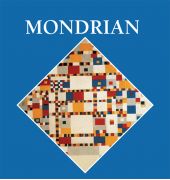 Piet Mondrian (1872-1944), who can be assigned to the school of classical modernism, was born in Amersfort, Netherlands. After studying in Amsterdam, he started his artist´s career in the impressionist style as a figure and landscape painter. His works from these years showed the influence of Vincent Van Gogh (1853-1890) and of Fauvism, a French school from the beginning of the 20th century. When he traveled to Paris in 1911, he discovered Pablo Picasso´s works (1881-1973) and, with that, Cubism. He thereafter became a pioneer of abstract painting in the Netherlands. From the 1920s on, his paintings show a vertical and horizontal composition that, combined with the oppositions of blue, yellow, red, and noncolored spaces, turned into his trademark. His art was very appreciated in New York, where he spent his last years. Mondrian was not only a painter but also an art theoretician and cofounder of the art school De Stijl. ... Далее
Piet Mondrian (1872-1944), who can be assigned to the school of classical modernism, was born in Amersfort, Netherlands. After studying in Amsterdam, he started his artist´s career in the impressionist style as a figure and landscape painter. His works from these years showed the influence of Vincent Van Gogh (1853-1890) and of Fauvism, a French school from the beginning of the 20th century. When he traveled to Paris in 1911, he discovered Pablo Picasso´s works (1881-1973) and, with that, Cubism. He thereafter became a pioneer of abstract painting in the Netherlands. From the 1920s on, his paintings show a vertical and horizontal composition that, combined with the oppositions of blue, yellow, red, and noncolored spaces, turned into his trademark. His art was very appreciated in New York, where he spent his last years. Mondrian was not only a painter but also an art theoretician and cofounder of the art school De Stijl. ... Далее -
35.
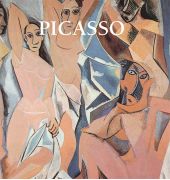 Picasso was born a Spaniard and, so they say, began to draw before he could speak. As an infant he was instinctively attracted to artist’s tools. In early childhood he could spend hours in happy concentration drawing spirals with a sense and meaning known only to himself. At other times, shunning children’s games, he traced his first pictures in the sand. This early self-expression held out promise of a rare gift. Málaga must be mentioned, for it was there, on 25 October 1881, that Pablo Ruiz Picasso was born and it was there that he spent the first ten years of his life. Picasso’s father was a painter and professor at the School of Fine Arts and Crafts. Picasso learnt from him the basics of formal academic art training. Then he studied at the Academy of Arts in Madrid but never finished his degree. Picasso, who was not yet eighteen, had reached the point of his greatest rebelliousness; he repudiated academia’s anemic aesthetics along with realism’s pedestrian prose and, quite naturally, joined those who called themselves modernists, the non-conformist artists and writers, those whom Sabartés called “the élite of Catalan thought” and who were grouped around the artists’ café Els Quatre Gats. During 1899 and 1900 the only subjects Picasso deemed worthy of painting were those which reflected the “final truth”; the transience of human life and the inevitability of death. His early works, ranged under the name of “Blue Period” (1901-1904), consist in blue-tinted paintings influenced by a trip through Spain and the death of his friend, Casagemas. Even though Picasso himself repeatedly insisted on the inner, subjective nature of the Blue Period, its genesis and, especially, the monochromatic blue were for many years explained as merely the results of various aesthetic influences. Between 1905 and 1907, Picasso entered a new phase, called “Rose Period” characterised by a more cheerful style with orange and pink colours. In Gosol, in the summer of 1906 the nude female form assumed an extraordinary importance for Picasso; he equated a depersonalised, aboriginal, simple nakedness with the concept of “woman”. The importance that female nudes were to assume as subjects for Picasso in the next few months (in the winter and spring of 1907) came when he developed the composition of the large painting, Les Demoiselles d’Avignon. Just as African art is usually considered the factor leading to the development of Picasso’s classic aesthetics in 1907, the lessons of Cézanne are perceived as the cornerstone of this new progression. This relates, first of all, to a spatial conception of the canvas as a composed entity, subjected to a certain constructive system. Georges Braque, with whom Picasso became friends in the autumn of 1908 and together with whom he led Cubism during the six years of its apogee, was amazed by the similarity of Picasso’s pictorial experiments to his own. He explained that: “Cubism’s main direction was the materialisation of space.” After his Cubist period, in the 1920s, Picasso returned to a more figurative style and got closer to the surrealist movement. He represented distorted and monstrous bodies but in a very personal style. After the bombing of Guernica during 1937, Picasso made one of his most famous works which starkly symbolises the horrors of that war and, indeed, all wars. In the 1960s, his art changed again and Picasso began looking at the art of great masters and based his paintings on ones by Velázquez, Poussin, Goya, Manet, Courbet and Delacroix. Picasso’s final works were a mixture of style, becoming more colourful, expressive and optimistic. Picasso died in 1973, in his villa in Mougins. The Russian Symbolist Georgy Chulkov wrote: “Picasso’s death is tragic. Yet how blind and naïve are those who believe in imitating Picasso and learning from him. Learning what? For these forms have no corresponding emotions outside of Hell. But to be in Hell means to anticipate death. The Cubists are hardly privy to such unlimited knowledge”. ... Далее
Picasso was born a Spaniard and, so they say, began to draw before he could speak. As an infant he was instinctively attracted to artist’s tools. In early childhood he could spend hours in happy concentration drawing spirals with a sense and meaning known only to himself. At other times, shunning children’s games, he traced his first pictures in the sand. This early self-expression held out promise of a rare gift. Málaga must be mentioned, for it was there, on 25 October 1881, that Pablo Ruiz Picasso was born and it was there that he spent the first ten years of his life. Picasso’s father was a painter and professor at the School of Fine Arts and Crafts. Picasso learnt from him the basics of formal academic art training. Then he studied at the Academy of Arts in Madrid but never finished his degree. Picasso, who was not yet eighteen, had reached the point of his greatest rebelliousness; he repudiated academia’s anemic aesthetics along with realism’s pedestrian prose and, quite naturally, joined those who called themselves modernists, the non-conformist artists and writers, those whom Sabartés called “the élite of Catalan thought” and who were grouped around the artists’ café Els Quatre Gats. During 1899 and 1900 the only subjects Picasso deemed worthy of painting were those which reflected the “final truth”; the transience of human life and the inevitability of death. His early works, ranged under the name of “Blue Period” (1901-1904), consist in blue-tinted paintings influenced by a trip through Spain and the death of his friend, Casagemas. Even though Picasso himself repeatedly insisted on the inner, subjective nature of the Blue Period, its genesis and, especially, the monochromatic blue were for many years explained as merely the results of various aesthetic influences. Between 1905 and 1907, Picasso entered a new phase, called “Rose Period” characterised by a more cheerful style with orange and pink colours. In Gosol, in the summer of 1906 the nude female form assumed an extraordinary importance for Picasso; he equated a depersonalised, aboriginal, simple nakedness with the concept of “woman”. The importance that female nudes were to assume as subjects for Picasso in the next few months (in the winter and spring of 1907) came when he developed the composition of the large painting, Les Demoiselles d’Avignon. Just as African art is usually considered the factor leading to the development of Picasso’s classic aesthetics in 1907, the lessons of Cézanne are perceived as the cornerstone of this new progression. This relates, first of all, to a spatial conception of the canvas as a composed entity, subjected to a certain constructive system. Georges Braque, with whom Picasso became friends in the autumn of 1908 and together with whom he led Cubism during the six years of its apogee, was amazed by the similarity of Picasso’s pictorial experiments to his own. He explained that: “Cubism’s main direction was the materialisation of space.” After his Cubist period, in the 1920s, Picasso returned to a more figurative style and got closer to the surrealist movement. He represented distorted and monstrous bodies but in a very personal style. After the bombing of Guernica during 1937, Picasso made one of his most famous works which starkly symbolises the horrors of that war and, indeed, all wars. In the 1960s, his art changed again and Picasso began looking at the art of great masters and based his paintings on ones by Velázquez, Poussin, Goya, Manet, Courbet and Delacroix. Picasso’s final works were a mixture of style, becoming more colourful, expressive and optimistic. Picasso died in 1973, in his villa in Mougins. The Russian Symbolist Georgy Chulkov wrote: “Picasso’s death is tragic. Yet how blind and naïve are those who believe in imitating Picasso and learning from him. Learning what? For these forms have no corresponding emotions outside of Hell. But to be in Hell means to anticipate death. The Cubists are hardly privy to such unlimited knowledge”. ... Далее -
36.
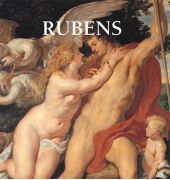 The eclectic art of which the Carracci family dreamed was realised by Rubens with the ease of genius. However, the problem was much more complicated for a man of the north, who wished to add to it a fusion of the Flemish and Latin spirits, of which the rather pedantic attempts of Romanism had illustrated the difficulties. He achieved it without losing anything of his overflowing personality, his questing imagination, and the enchanting discoveries of the greatest colourist known to painting. Rubens, the greatest master of Baroque painting’s exuberance, took from the Italian Renaissance what could be of use to him, and then built upon it a style of his own. It is distinguished by a wonderful mastery of the human form and an amazing wealth of splendidly lighted colour. He was a man of much intellectual poise and was accustomed to court life, travelling from court to court, with pomp, as a trusted envoy. Rubens was one of those rare mortals who do real honour to humanity. He was handsome, good and generous, and he loved virtue. His laborious life was well ordered. The creator of so many delightful pagan feasts went each morning to mass before proceeding to his studio. He was the most illustrious type of happy and perfectly balanced genius, and combined in his personage passion and science, ardour and reflection. Rubens expressed drama as well as joy, since nothing human was foreign to him, and he could command at will the pathos of colour and expression which he required in his religious masterpieces. It might be said that he was as prolific in the representation of the joy and exuberance of life as Michelangelo was in the representation of passionate emotions. ... Далее
The eclectic art of which the Carracci family dreamed was realised by Rubens with the ease of genius. However, the problem was much more complicated for a man of the north, who wished to add to it a fusion of the Flemish and Latin spirits, of which the rather pedantic attempts of Romanism had illustrated the difficulties. He achieved it without losing anything of his overflowing personality, his questing imagination, and the enchanting discoveries of the greatest colourist known to painting. Rubens, the greatest master of Baroque painting’s exuberance, took from the Italian Renaissance what could be of use to him, and then built upon it a style of his own. It is distinguished by a wonderful mastery of the human form and an amazing wealth of splendidly lighted colour. He was a man of much intellectual poise and was accustomed to court life, travelling from court to court, with pomp, as a trusted envoy. Rubens was one of those rare mortals who do real honour to humanity. He was handsome, good and generous, and he loved virtue. His laborious life was well ordered. The creator of so many delightful pagan feasts went each morning to mass before proceeding to his studio. He was the most illustrious type of happy and perfectly balanced genius, and combined in his personage passion and science, ardour and reflection. Rubens expressed drama as well as joy, since nothing human was foreign to him, and he could command at will the pathos of colour and expression which he required in his religious masterpieces. It might be said that he was as prolific in the representation of the joy and exuberance of life as Michelangelo was in the representation of passionate emotions. ... Далее -
37.
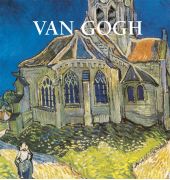 Vincent van Gogh’s life and work are so intertwined that it is hardly possible to observe one without thinking of the other. Van Gogh has indeed become the incarnation of the suffering, misunderstood martyr of modern art, the emblem of the artist as an outsider. An article, published in 1890, gave details about van Gogh’s illness. The author of the article saw the painter as “a terrible and demented genius, often sublime, sometimes grotesque, always at the brink of the pathological.” Very little is known about Vincent’s childhood. At the age of eleven he had to leave “the human nest”, as he called it himself, for various boarding schools. The first portrait shows us van Gogh as an earnest nineteen year old. At that time he had already been at work for three years in The Hague and, later, in London in the gallery Goupil & Co. In 1874 his love for Ursula Loyer ended in disaster and a year later he was transferred to Paris, against his will. After a particularly heated argument during Christmas holidays in 1881, his father, a pastor, ordered Vincent to leave. With this final break, he abandoned his family name and signed his canvases simply “Vincent”. He left for Paris and never returned to Holland. In Paris he came to know Paul Gauguin, whose paintings he greatly admired. The self-portrait was the main subject of Vincent’s work from 1886c88. In February 1888 Vincent left Paris for Arles and tried to persuade Gauguin to join him. The months of waiting for Gauguin were the most productive time in van Gogh’s life. He wanted to show his friend as many pictures as possible and decorate the Yellow House. But Gauguin did not share his views on art and finally returned to Paris. On 7 January, 1889, fourteen days after his famous self-mutilation, Vincent left the hospital where he was convalescing. Although he hoped to recover from and to forget his madness, but he actually came back twice more in the same year. During his last stay in hospital, Vincent painted landscapes in which he recreated the world of his childhood. It is said that Vincent van Gogh shot himself in the side in a field but decided to return to the inn and went to bed. The landlord informed Dr Gachet and his brother Theo, who described the last moments of his life which ended on 29 July, 1890: “I wanted to die. While I was sitting next to him promising that we would try to heal him. […], he answered, ‘La tristesse durera toujours (The sadness will last forever).’” ... Далее
Vincent van Gogh’s life and work are so intertwined that it is hardly possible to observe one without thinking of the other. Van Gogh has indeed become the incarnation of the suffering, misunderstood martyr of modern art, the emblem of the artist as an outsider. An article, published in 1890, gave details about van Gogh’s illness. The author of the article saw the painter as “a terrible and demented genius, often sublime, sometimes grotesque, always at the brink of the pathological.” Very little is known about Vincent’s childhood. At the age of eleven he had to leave “the human nest”, as he called it himself, for various boarding schools. The first portrait shows us van Gogh as an earnest nineteen year old. At that time he had already been at work for three years in The Hague and, later, in London in the gallery Goupil & Co. In 1874 his love for Ursula Loyer ended in disaster and a year later he was transferred to Paris, against his will. After a particularly heated argument during Christmas holidays in 1881, his father, a pastor, ordered Vincent to leave. With this final break, he abandoned his family name and signed his canvases simply “Vincent”. He left for Paris and never returned to Holland. In Paris he came to know Paul Gauguin, whose paintings he greatly admired. The self-portrait was the main subject of Vincent’s work from 1886c88. In February 1888 Vincent left Paris for Arles and tried to persuade Gauguin to join him. The months of waiting for Gauguin were the most productive time in van Gogh’s life. He wanted to show his friend as many pictures as possible and decorate the Yellow House. But Gauguin did not share his views on art and finally returned to Paris. On 7 January, 1889, fourteen days after his famous self-mutilation, Vincent left the hospital where he was convalescing. Although he hoped to recover from and to forget his madness, but he actually came back twice more in the same year. During his last stay in hospital, Vincent painted landscapes in which he recreated the world of his childhood. It is said that Vincent van Gogh shot himself in the side in a field but decided to return to the inn and went to bed. The landlord informed Dr Gachet and his brother Theo, who described the last moments of his life which ended on 29 July, 1890: “I wanted to die. While I was sitting next to him promising that we would try to heal him. […], he answered, ‘La tristesse durera toujours (The sadness will last forever).’” ... Далее -
38.
 Whistler suddenly shot to fame like a meteor at a crucial moment in the history of art, a field in which he was a pioneer. Like the impressionists, with whom he sided, he wanted to impose his own ideas. Whistler’s work can be divided into four periods. The first may be called a period of research in which he was influenced by the Realism of Gustave Courbet and by Japanese art. Whistler then discovered his own originality in the Nocturnes and the Cremorne Gardens series, thereby coming into conflict with the academics who wanted a work of art to tell a story. When he painted the portrait of his mother, Whistler entitled it Arrangement in Grey and Black and this is symbolic of his aesthetic theories. When painting the Cremorne Pleasure Gardens it was not to depict identifiable figures, as did Renoir in his work on similar themes, but to capture an atmosphere. He loved the mists that hovered over the banks of the Thames, the pale light, and the factory chimneys which at night turned into magical minarets. Night redrew landscapes, effacing the details. This was the period in which he became an adventurer in art; his work, which verged on abstraction, shocked his contemporaries. The third period is dominated by the full-length portraits that brought him his fame. He was able to imbue this traditional genre with his profound originality. He tried to capture part of the souls of his models and placed the characters in their natural habitats. This gave his models a strange presence so that they seem about to walk out of the picture to physically encounter the viewer. By extracting the poetic substance from individuals he created portraits described as “mediums” by his contemporaries, and which were the inspiration for Oscar Wilde’s The Picture of Dorian Gray. Towards the end of his life, the artist began painting landscapes and portraits in the classical tradition, strongly influenced by Velázquez. Whistler proved to be extremely rigorous in ensuring his paintings coincided with his theories. He never hesitated in crossing swords with the most famous art theoreticians of his day. His personality, his outbursts, and his elegance were a perfect focus for curiosity and admiration. He was a close friend of Stéphane Mallarmé, and admired by Marcel Proust, who rendered homage to him in A La Recherche du Temps Perdu. He was also a provocative dandy, a prickly socialite, a demanding artist, and a daring innovator. ... Далее
Whistler suddenly shot to fame like a meteor at a crucial moment in the history of art, a field in which he was a pioneer. Like the impressionists, with whom he sided, he wanted to impose his own ideas. Whistler’s work can be divided into four periods. The first may be called a period of research in which he was influenced by the Realism of Gustave Courbet and by Japanese art. Whistler then discovered his own originality in the Nocturnes and the Cremorne Gardens series, thereby coming into conflict with the academics who wanted a work of art to tell a story. When he painted the portrait of his mother, Whistler entitled it Arrangement in Grey and Black and this is symbolic of his aesthetic theories. When painting the Cremorne Pleasure Gardens it was not to depict identifiable figures, as did Renoir in his work on similar themes, but to capture an atmosphere. He loved the mists that hovered over the banks of the Thames, the pale light, and the factory chimneys which at night turned into magical minarets. Night redrew landscapes, effacing the details. This was the period in which he became an adventurer in art; his work, which verged on abstraction, shocked his contemporaries. The third period is dominated by the full-length portraits that brought him his fame. He was able to imbue this traditional genre with his profound originality. He tried to capture part of the souls of his models and placed the characters in their natural habitats. This gave his models a strange presence so that they seem about to walk out of the picture to physically encounter the viewer. By extracting the poetic substance from individuals he created portraits described as “mediums” by his contemporaries, and which were the inspiration for Oscar Wilde’s The Picture of Dorian Gray. Towards the end of his life, the artist began painting landscapes and portraits in the classical tradition, strongly influenced by Velázquez. Whistler proved to be extremely rigorous in ensuring his paintings coincided with his theories. He never hesitated in crossing swords with the most famous art theoreticians of his day. His personality, his outbursts, and his elegance were a perfect focus for curiosity and admiration. He was a close friend of Stéphane Mallarmé, and admired by Marcel Proust, who rendered homage to him in A La Recherche du Temps Perdu. He was also a provocative dandy, a prickly socialite, a demanding artist, and a daring innovator. ... Далее -
39.
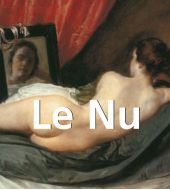 Tout comme le mot « nu » peut avoir deux significations complètement différentes, un corps déshabillé peut provoquer un sentiment de plaisir ou de honte, servant de symbole à des concepts contradictoires, la beauté et l’indécence. Ce livre est consacré à toutes les magnifiques représentations de nus des grands artistes de l’Antiquité, de la Renaissance, de l’Impressionnisme français et de l’art contemporain ; de Botticelli et Michel-Ange, en passant par Cézane et Renoir, à Picasso et Botero. Ce livre soigné et complet ne plaira pas seulement aux amateurs d’art, mais sera aussi un bel objet de collection. ... Далее
Tout comme le mot « nu » peut avoir deux significations complètement différentes, un corps déshabillé peut provoquer un sentiment de plaisir ou de honte, servant de symbole à des concepts contradictoires, la beauté et l’indécence. Ce livre est consacré à toutes les magnifiques représentations de nus des grands artistes de l’Antiquité, de la Renaissance, de l’Impressionnisme français et de l’art contemporain ; de Botticelli et Michel-Ange, en passant par Cézane et Renoir, à Picasso et Botero. Ce livre soigné et complet ne plaira pas seulement aux amateurs d’art, mais sera aussi un bel objet de collection. ... Далее -
40.
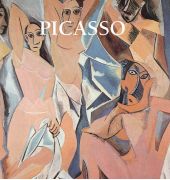 Pablo Picasso (Málaga, 1881 – Mougins, 1973) Picasso naquit en Espagne et l’on dit même qu’il commença à dessiner avant de savoir parler. Enfant, il fut nstinctivement attiré par les instruments de l’artiste. Il pouvait passer des heures de joyeuse concentration à dessiner des spirales pourvues d’un sens qu’il était seul à connaître. Fuyant les jeux d’enfants, il traça ses premiers tableaux dans le sable. Cette manière précoce de s’exprimer contenait la promesse d’un rare talent. Nous nous devons de mentionner Málaga, car c’est là, le 25 Octobre 1881, que Pablo Ruiz Picasso naquit et qu’il passa les dix premières années de sa vie. Le père de Picasso était lui-même peintre et professeur à l’école des Beaux-Arts de la ville. Picasso apprit auprès de lui les rudiments de la peinture académique. Puis il poursuivit ses études à l’académie des Arts de Madrid mais n’obtint jamais son diplôme. Picasso, qui n’avait pas encore 18 ans, avait atteint le point culminant de sa rébellion, répudiant l’esthétique anémique de l’académisme et le prosaïsme du réalisme. Tout naturellement, il se joignit à ceux qui se qualifiaient de modernistes, c’est à dire, les artistes et les écrivains non-conformistes, ceux que Sabartés appelait «l’élite de la pensée catalane » et qui se retrouvaient au café des artistes Els Quatre Gats. Durant les années 1899 et 1900, les seuls sujets dignes d’être peints aux yeux de Picasso étaient ceux qui reflétaient la vérité ultime : le caractère éphémère de la vie humaine et l’inéluctabilité de la mort. Ses premières oeuvres, cataloguées sous le nom de «période bleue » (1901-1904), consistent en peintures exécutées dans des teintes bleues, inspirées par un voyage à travers l’Espagne et la mort de son ami Casagemas. Même si Picasso lui-même insistait fréquemment sur la nature intérieure et subjective de la période bleue, sa genèse et, en particulier, ce monochromatisme bleu, furent des années durant, expliqués comme les résultats de diverses influences esthétiques. Entre 1905 et 1907, Picasso entra dans une nouvelle phase, appelée la «période rose » caractérisée par un style plus enjoué, dominé par l’orange et le rose. A Gosal, au cours de l’été 1906, le nu féminin prit une importance considérable pour Picasso – une nudité dépersonnalisée, aborigène, simple, comme le concept de «femme ». La dimension que les nus féminins allaient prendre chez Picasso dans les mois suivants, précisément durant l’hiver et le printemps 1907, s’imposa lorsqu’il élabora la composition de son impressionnante peinture connue sous le titre des Demoiselles d’Avignon. S’il est vrai que l’art africain est habituellement considéré comme le facteur déterminant du développement d’une sthétique classique en 1907, les leçons de Cézanne sont quand à elles perçues comme la pierre angulaire de cette nouvelle progression. Ceci est lié tout d’abord à une conception spatiale de la toile comme une entité composée, soumise à un certain système de construction. Georges Braque, dont Picasso devint l’ami à l’automne 1908 et avec lequel il mena le cubisme à son apogée en six ans, fut surpris pas les similitudes entre les expériences picturales de Picasso et les siennes. Il expliquait que le «principal objectif du Cubisme était la matérialisation de l’espace. A l’issue de sa période cubiste, dans les années 1920, Picasso revint à un style plus figuratif et se rapprocha du ouvement surréaliste. Il représenta des corps difformes et monstrueux mais d’une manière très personnelle. Après le bombardement de Guernica en 1937, Picasso réalisa l’une de ses oeuvres les plus célèbres, symbole des horreurs de la guerre. Dans les années 1960, son art changea à nouveau et Picasso commença à regarder de plus près les grands maîtres, s’inspirant dans ses tableaux des oeuvres de Velázquez, Poussin, Goya, Manet, Courbet, Delacroix. Les dernières oeuvres de Picasso étaient un mélange de styles, devenant plus colorées, expressives et optimistes. Picasso mourut en 1973, dans sa villa de Mougins. Le symboliste russe Georgy Chulkov écrivit : «La mort de Picasso est une chose tragique. Pourtant, combien ceux qui croient pouvoir imiter Picasso ou apprendre de lui sont en vérité aveugles et naïfs. Apprendre quoi ? Ces formes ne correspondent à aucune émotion existant hors de l’Enfer. Mais être en Enfer signifie anticiper la mort, et les Cubistes ne s’intéressent guère à ce genre de connaissance infinie. » ... Далее
Pablo Picasso (Málaga, 1881 – Mougins, 1973) Picasso naquit en Espagne et l’on dit même qu’il commença à dessiner avant de savoir parler. Enfant, il fut nstinctivement attiré par les instruments de l’artiste. Il pouvait passer des heures de joyeuse concentration à dessiner des spirales pourvues d’un sens qu’il était seul à connaître. Fuyant les jeux d’enfants, il traça ses premiers tableaux dans le sable. Cette manière précoce de s’exprimer contenait la promesse d’un rare talent. Nous nous devons de mentionner Málaga, car c’est là, le 25 Octobre 1881, que Pablo Ruiz Picasso naquit et qu’il passa les dix premières années de sa vie. Le père de Picasso était lui-même peintre et professeur à l’école des Beaux-Arts de la ville. Picasso apprit auprès de lui les rudiments de la peinture académique. Puis il poursuivit ses études à l’académie des Arts de Madrid mais n’obtint jamais son diplôme. Picasso, qui n’avait pas encore 18 ans, avait atteint le point culminant de sa rébellion, répudiant l’esthétique anémique de l’académisme et le prosaïsme du réalisme. Tout naturellement, il se joignit à ceux qui se qualifiaient de modernistes, c’est à dire, les artistes et les écrivains non-conformistes, ceux que Sabartés appelait «l’élite de la pensée catalane » et qui se retrouvaient au café des artistes Els Quatre Gats. Durant les années 1899 et 1900, les seuls sujets dignes d’être peints aux yeux de Picasso étaient ceux qui reflétaient la vérité ultime : le caractère éphémère de la vie humaine et l’inéluctabilité de la mort. Ses premières oeuvres, cataloguées sous le nom de «période bleue » (1901-1904), consistent en peintures exécutées dans des teintes bleues, inspirées par un voyage à travers l’Espagne et la mort de son ami Casagemas. Même si Picasso lui-même insistait fréquemment sur la nature intérieure et subjective de la période bleue, sa genèse et, en particulier, ce monochromatisme bleu, furent des années durant, expliqués comme les résultats de diverses influences esthétiques. Entre 1905 et 1907, Picasso entra dans une nouvelle phase, appelée la «période rose » caractérisée par un style plus enjoué, dominé par l’orange et le rose. A Gosal, au cours de l’été 1906, le nu féminin prit une importance considérable pour Picasso – une nudité dépersonnalisée, aborigène, simple, comme le concept de «femme ». La dimension que les nus féminins allaient prendre chez Picasso dans les mois suivants, précisément durant l’hiver et le printemps 1907, s’imposa lorsqu’il élabora la composition de son impressionnante peinture connue sous le titre des Demoiselles d’Avignon. S’il est vrai que l’art africain est habituellement considéré comme le facteur déterminant du développement d’une sthétique classique en 1907, les leçons de Cézanne sont quand à elles perçues comme la pierre angulaire de cette nouvelle progression. Ceci est lié tout d’abord à une conception spatiale de la toile comme une entité composée, soumise à un certain système de construction. Georges Braque, dont Picasso devint l’ami à l’automne 1908 et avec lequel il mena le cubisme à son apogée en six ans, fut surpris pas les similitudes entre les expériences picturales de Picasso et les siennes. Il expliquait que le «principal objectif du Cubisme était la matérialisation de l’espace. A l’issue de sa période cubiste, dans les années 1920, Picasso revint à un style plus figuratif et se rapprocha du ouvement surréaliste. Il représenta des corps difformes et monstrueux mais d’une manière très personnelle. Après le bombardement de Guernica en 1937, Picasso réalisa l’une de ses oeuvres les plus célèbres, symbole des horreurs de la guerre. Dans les années 1960, son art changea à nouveau et Picasso commença à regarder de plus près les grands maîtres, s’inspirant dans ses tableaux des oeuvres de Velázquez, Poussin, Goya, Manet, Courbet, Delacroix. Les dernières oeuvres de Picasso étaient un mélange de styles, devenant plus colorées, expressives et optimistes. Picasso mourut en 1973, dans sa villa de Mougins. Le symboliste russe Georgy Chulkov écrivit : «La mort de Picasso est une chose tragique. Pourtant, combien ceux qui croient pouvoir imiter Picasso ou apprendre de lui sont en vérité aveugles et naïfs. Apprendre quoi ? Ces formes ne correspondent à aucune émotion existant hors de l’Enfer. Mais être en Enfer signifie anticiper la mort, et les Cubistes ne s’intéressent guère à ce genre de connaissance infinie. » ... Далее -
41.
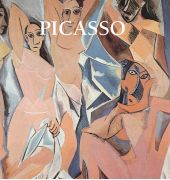 Pablo Picasso (Málaga, 1881 – Mougins, 1973) Picasso naquit en Espagne et l’on dit même qu’il commença à dessiner avant de savoir parler. Enfant, il fut nstinctivement attiré par les instruments de l’artiste. Il pouvait passer des heures de joyeuse concentration à dessiner des spirales pourvues d’un sens qu’il était seul à connaître. Fuyant les jeux d’enfants, il traça ses premiers tableaux dans le sable. Cette manière précoce de s’exprimer contenait la promesse d’un rare talent. Nous nous devons de mentionner Málaga, car c’est là, le 25 Octobre 1881, que Pablo Ruiz Picasso naquit et qu’il passa les dix premières années de sa vie. Le père de Picasso était lui-même peintre et professeur à l’école des Beaux-Arts de la ville. Picasso apprit auprès de lui les rudiments de la peinture académique. Puis il poursuivit ses études à l’académie des Arts de Madrid mais n’obtint jamais son diplôme. Picasso, qui n’avait pas encore 18 ans, avait atteint le point culminant de sa rébellion, répudiant l’esthétique anémique de l’académisme et le prosaïsme du réalisme. Tout naturellement, il se joignit à ceux qui se qualifiaient de modernistes, c’est à dire, les artistes et les écrivains non-conformistes, ceux que Sabartés appelait «l’élite de la pensée catalane » et qui se retrouvaient au café des artistes Els Quatre Gats. Durant les années 1899 et 1900, les seuls sujets dignes d’être peints aux yeux de Picasso étaient ceux qui reflétaient la vérité ultime : le caractère éphémère de la vie humaine et l’inéluctabilité de la mort. Ses premières oeuvres, cataloguées sous le nom de «période bleue » (1901-1904), consistent en peintures exécutées dans des teintes bleues, inspirées par un voyage à travers l’Espagne et la mort de son ami Casagemas. Même si Picasso lui-même insistait fréquemment sur la nature intérieure et subjective de la période bleue, sa genèse et, en particulier, ce monochromatisme bleu, furent des années durant, expliqués comme les résultats de diverses influences esthétiques. Entre 1905 et 1907, Picasso entra dans une nouvelle phase, appelée la «période rose » caractérisée par un style plus enjoué, dominé par l’orange et le rose. A Gosal, au cours de l’été 1906, le nu féminin prit une importance considérable pour Picasso – une nudité dépersonnalisée, aborigène, simple, comme le concept de «femme ». La dimension que les nus féminins allaient prendre chez Picasso dans les mois suivants, précisément durant l’hiver et le printemps 1907, s’imposa lorsqu’il élabora la composition de son impressionnante peinture connue sous le titre des Demoiselles d’Avignon. S’il est vrai que l’art africain est habituellement considéré comme le facteur déterminant du développement d’une sthétique classique en 1907, les leçons de Cézanne sont quand à elles perçues comme la pierre angulaire de cette nouvelle progression. Ceci est lié tout d’abord à une conception spatiale de la toile comme une entité composée, soumise à un certain système de construction. Georges Braque, dont Picasso devint l’ami à l’automne 1908 et avec lequel il mena le cubisme à son apogée en six ans, fut surpris pas les similitudes entre les expériences picturales de Picasso et les siennes. Il expliquait que le «principal objectif du Cubisme était la matérialisation de l’espace. A l’issue de sa période cubiste, dans les années 1920, Picasso revint à un style plus figuratif et se rapprocha du ouvement surréaliste. Il représenta des corps difformes et monstrueux mais d’une manière très personnelle. Après le bombardement de Guernica en 1937, Picasso réalisa l’une de ses oeuvres les plus célèbres, symbole des horreurs de la guerre. Dans les années 1960, son art changea à nouveau et Picasso commença à regarder de plus près les grands maîtres, s’inspirant dans ses tableaux des oeuvres de Velázquez, Poussin, Goya, Manet, Courbet, Delacroix. Les dernières oeuvres de Picasso étaient un mélange de styles, devenant plus colorées, expressives et optimistes. Picasso mourut en 1973, dans sa villa de Mougins. Le symboliste russe Georgy Chulkov écrivit : «La mort de Picasso est une chose tragique. Pourtant, combien ceux qui croient pouvoir imiter Picasso ou apprendre de lui sont en vérité aveugles et naïfs. Apprendre quoi ? Ces formes ne correspondent à aucune émotion existant hors de l’Enfer. Mais être en Enfer signifie anticiper la mort, et les Cubistes ne s’intéressent guère à ce genre de connaissance infinie. » ... Далее
Pablo Picasso (Málaga, 1881 – Mougins, 1973) Picasso naquit en Espagne et l’on dit même qu’il commença à dessiner avant de savoir parler. Enfant, il fut nstinctivement attiré par les instruments de l’artiste. Il pouvait passer des heures de joyeuse concentration à dessiner des spirales pourvues d’un sens qu’il était seul à connaître. Fuyant les jeux d’enfants, il traça ses premiers tableaux dans le sable. Cette manière précoce de s’exprimer contenait la promesse d’un rare talent. Nous nous devons de mentionner Málaga, car c’est là, le 25 Octobre 1881, que Pablo Ruiz Picasso naquit et qu’il passa les dix premières années de sa vie. Le père de Picasso était lui-même peintre et professeur à l’école des Beaux-Arts de la ville. Picasso apprit auprès de lui les rudiments de la peinture académique. Puis il poursuivit ses études à l’académie des Arts de Madrid mais n’obtint jamais son diplôme. Picasso, qui n’avait pas encore 18 ans, avait atteint le point culminant de sa rébellion, répudiant l’esthétique anémique de l’académisme et le prosaïsme du réalisme. Tout naturellement, il se joignit à ceux qui se qualifiaient de modernistes, c’est à dire, les artistes et les écrivains non-conformistes, ceux que Sabartés appelait «l’élite de la pensée catalane » et qui se retrouvaient au café des artistes Els Quatre Gats. Durant les années 1899 et 1900, les seuls sujets dignes d’être peints aux yeux de Picasso étaient ceux qui reflétaient la vérité ultime : le caractère éphémère de la vie humaine et l’inéluctabilité de la mort. Ses premières oeuvres, cataloguées sous le nom de «période bleue » (1901-1904), consistent en peintures exécutées dans des teintes bleues, inspirées par un voyage à travers l’Espagne et la mort de son ami Casagemas. Même si Picasso lui-même insistait fréquemment sur la nature intérieure et subjective de la période bleue, sa genèse et, en particulier, ce monochromatisme bleu, furent des années durant, expliqués comme les résultats de diverses influences esthétiques. Entre 1905 et 1907, Picasso entra dans une nouvelle phase, appelée la «période rose » caractérisée par un style plus enjoué, dominé par l’orange et le rose. A Gosal, au cours de l’été 1906, le nu féminin prit une importance considérable pour Picasso – une nudité dépersonnalisée, aborigène, simple, comme le concept de «femme ». La dimension que les nus féminins allaient prendre chez Picasso dans les mois suivants, précisément durant l’hiver et le printemps 1907, s’imposa lorsqu’il élabora la composition de son impressionnante peinture connue sous le titre des Demoiselles d’Avignon. S’il est vrai que l’art africain est habituellement considéré comme le facteur déterminant du développement d’une sthétique classique en 1907, les leçons de Cézanne sont quand à elles perçues comme la pierre angulaire de cette nouvelle progression. Ceci est lié tout d’abord à une conception spatiale de la toile comme une entité composée, soumise à un certain système de construction. Georges Braque, dont Picasso devint l’ami à l’automne 1908 et avec lequel il mena le cubisme à son apogée en six ans, fut surpris pas les similitudes entre les expériences picturales de Picasso et les siennes. Il expliquait que le «principal objectif du Cubisme était la matérialisation de l’espace. A l’issue de sa période cubiste, dans les années 1920, Picasso revint à un style plus figuratif et se rapprocha du ouvement surréaliste. Il représenta des corps difformes et monstrueux mais d’une manière très personnelle. Après le bombardement de Guernica en 1937, Picasso réalisa l’une de ses oeuvres les plus célèbres, symbole des horreurs de la guerre. Dans les années 1960, son art changea à nouveau et Picasso commença à regarder de plus près les grands maîtres, s’inspirant dans ses tableaux des oeuvres de Velázquez, Poussin, Goya, Manet, Courbet, Delacroix. Les dernières oeuvres de Picasso étaient un mélange de styles, devenant plus colorées, expressives et optimistes. Picasso mourut en 1973, dans sa villa de Mougins. Le symboliste russe Georgy Chulkov écrivit : «La mort de Picasso est une chose tragique. Pourtant, combien ceux qui croient pouvoir imiter Picasso ou apprendre de lui sont en vérité aveugles et naïfs. Apprendre quoi ? Ces formes ne correspondent à aucune émotion existant hors de l’Enfer. Mais être en Enfer signifie anticiper la mort, et les Cubistes ne s’intéressent guère à ce genre de connaissance infinie. » ... Далее -
42.
 Die Vereinfachung der Formen und Linien, die Verwendung von reinen Farben, das Verständnis der Farbe als Farbäquivalent des Lichts, die Organisation des Raums durch Gegenüberstellung intensiver Farbflächen, das Recht, ein Werk entsprechend eigener Regeln zu malen, das Recht, sich aktiv mit dem Gesehenen auseinander zu setzen, es zu verändern mit dem Ziel, noch unbekannte Seiten der Wirklichkeit aufzuzeigen, kurz alles das, was am Anfang der neuen Kunst stand, wurde von Gauguin theoretisch klar, bildhaft und logisch begründet und formuliert, auch wenn es noch keine konsequente Verkörperung in seinem Schaffen fand. Das klare Verständnis der schöpferischen Aufgaben, die zu lösen den kommenden Generationen vorbehalten war, gibt uns das Recht, Gauguin als einen der unmittelbaren Vorläufer der Kunst des 20. Jahrhunderts anzusehen. Unter seinem Einfluss standen zu Beginn des Jahrhunderts, nach der posthumen Ausstellung seiner Werke, auch Picasso und Matisse, zwei Meister, von denen die Kunst unserer Epoche geprägt wurde. Dieser Einfluss ist in einer Reihe von Werken beider Künstler leicht erkennbar. Von besonderer Bedeutung aber ist, dass Gauguin mit seinem Schaffen direkt oder indirekt den Anstoß zur Umdeutung der Grundlagen der modernen Kunst gab. ... Далее
Die Vereinfachung der Formen und Linien, die Verwendung von reinen Farben, das Verständnis der Farbe als Farbäquivalent des Lichts, die Organisation des Raums durch Gegenüberstellung intensiver Farbflächen, das Recht, ein Werk entsprechend eigener Regeln zu malen, das Recht, sich aktiv mit dem Gesehenen auseinander zu setzen, es zu verändern mit dem Ziel, noch unbekannte Seiten der Wirklichkeit aufzuzeigen, kurz alles das, was am Anfang der neuen Kunst stand, wurde von Gauguin theoretisch klar, bildhaft und logisch begründet und formuliert, auch wenn es noch keine konsequente Verkörperung in seinem Schaffen fand. Das klare Verständnis der schöpferischen Aufgaben, die zu lösen den kommenden Generationen vorbehalten war, gibt uns das Recht, Gauguin als einen der unmittelbaren Vorläufer der Kunst des 20. Jahrhunderts anzusehen. Unter seinem Einfluss standen zu Beginn des Jahrhunderts, nach der posthumen Ausstellung seiner Werke, auch Picasso und Matisse, zwei Meister, von denen die Kunst unserer Epoche geprägt wurde. Dieser Einfluss ist in einer Reihe von Werken beider Künstler leicht erkennbar. Von besonderer Bedeutung aber ist, dass Gauguin mit seinem Schaffen direkt oder indirekt den Anstoß zur Umdeutung der Grundlagen der modernen Kunst gab. ... Далее
Комментарии:


